Someone brave enough aspired to demolish the pyramids and ruin the Ancient Egyptian legacy in the 12th century. Al-Aziz, a Kurdish ruler, wanted to destroy the pyramids, so he went along and tried to execute his plan but he soon found that destroying the pyramids would be as expensive as it took to build them, and he gave up soon after.

Al-Aziz did manage to leave his mark on the Menkaure’s Pyramid. If you visit the pyramid today, you will see a massive slash on one side. That’s all that Al-Aziz managed to achieve during his intention to demolish one of the most stunning structures in the world. This score stands to establish just how unyielding and sturdy these structures genuinely are.
The Invention of The Wheel
It is claimed that the very first pyramid in Egypt was built around 4,700 years ago, during the Third Dynasty, when ancient civilization hadn’t yet discovered the wheel! That means that they had assembled these gigantic structures seemingly without using wheels for transportation. Now that is impressive!
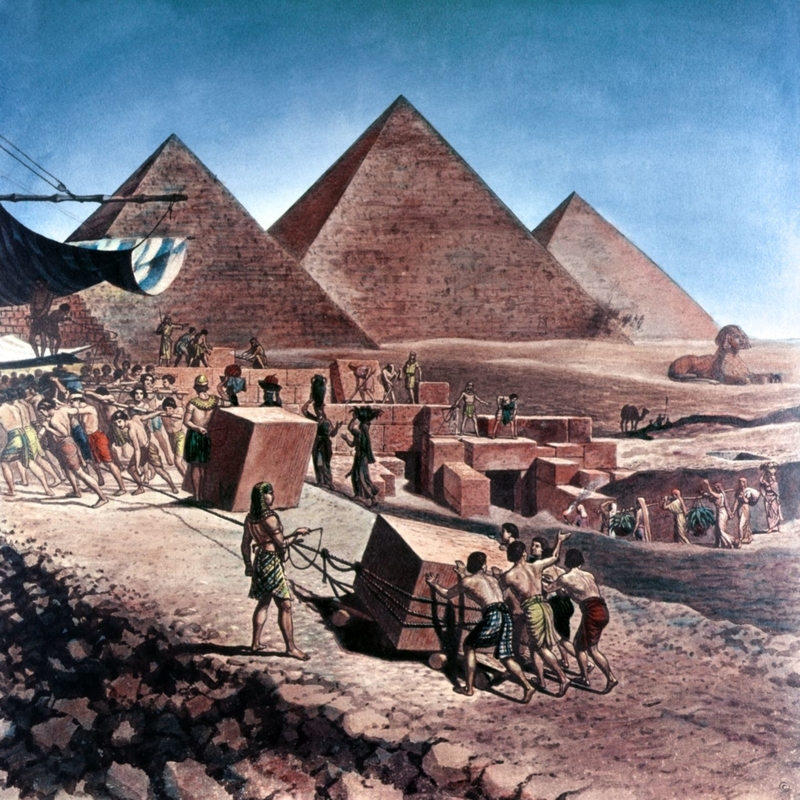
Because the pyramid was constructed using bulky granite and limestone blocks, there was no way they could’ve relocated them using wooden rails and ropes.
Who Built the Pyramids?
The only evidence scientists have from that period is that the Egyptians only had ropes and wooden ramps to build their structures and fortresses. According to calculations, in one day, they would have had to lay down a new block every two and a half minutes to finish the construction in 20 years!

There is no concrete evidence of how the Egyptians built something so incredibly big and extremely precise. Therefore many historians, archaeologists, and scientists believe that the pyramids were built by a civilization that was even more advanced.
To Build The Pyramids
The largest pyramid and the most massive structure in the world is the Great Pyramid, built around 2550 BC, during Pharaoh Khufu's reign. Scientific research says it was built by 20,000 people, and it took them 20 years to complete it.

When we look at it from our modern perspective, it seems highly unlikely that the ancient people managed to build such a magnificent project only using wood and ropes—no wonder it took so long!
The Pyramids Used to Look Much Different
The Great Pyramid appears to blend with the sand and dirt surrounding it, but these pyramids looked utterly different back in the day. The surface layer was covered with shiny, white polished limestone, which made the pyramids shine.

Sadly, there was a strong earthquake in 1303 AD that caused the limestone layer to loosen, so people had to take the surface stones off. Of course, these stones didn’t go to waste. They were reused for fortresses and other structures.
How Many Sides Does the Pyramid Have?
When you think of a pyramid, it's a geometrical shape with four sides. However, that's not exactly the case with the Great Pyramid. It may look like it has four sides when you look at it from the ground; the Great Pyramid actually has eight sides.
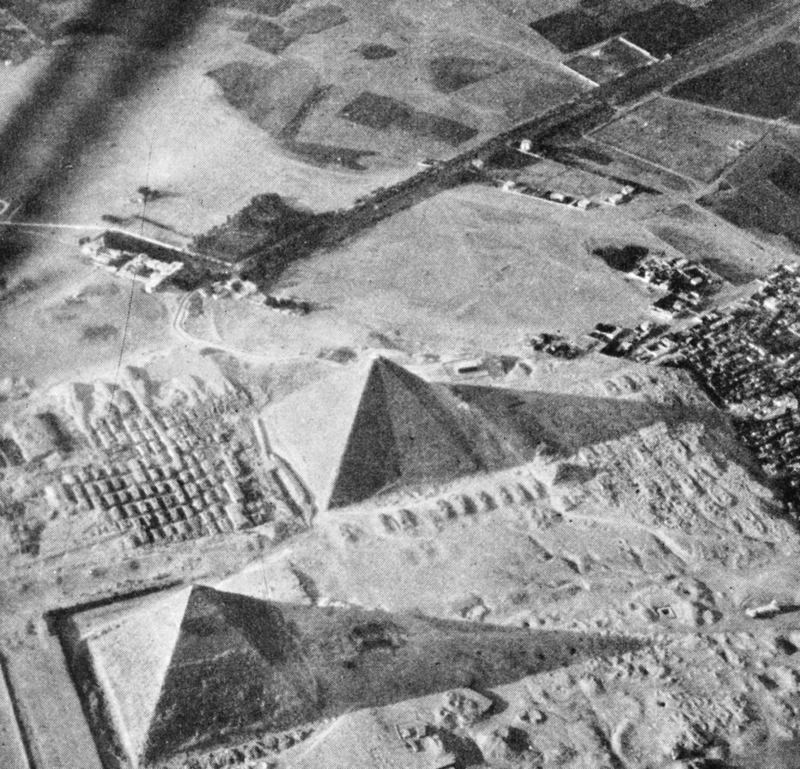
Some experts believe it was constructed this way to prevent the stones from shifting. Others believe that erosion from the wind caused the pyramid to split into eight sides. There is no evidence to prove either of these theories, but the sides seem so precise that it seems unlikely that wind could’ve made that happen.
Evidence of Advanced Tools
Scientists believe that ancient civilizations had more advanced tools than we believe, and a significant piece of evidence was found in Khufu’s Sarcophagus. Archaeologists, who worked on this site, discovered the evidence of drills that were strong enough to drill through granite blocks. Khufu, who was behind the Great Pyramid construction, had a coffin that weighed over 3.5 tons.

The only rational conclusion is that the stone was brought to this place before. The sarcophagus stood separate from other blocks in a room inside the pyramid, with holes that had to be made by humans. Considering that it was made of granite, the block was way too dense to have been drilled with anything other than advanced tools, which supposedly did not exist at that time.
The Labyrinth Beneath the Pyramids
We already know about the intricate labyrinth underneath the pyramids, but we don’t know how long it is and where it can lead us. The sophisticated tunnel system is made from limestone bedrock, and some of the most notable archaeological discoveries were made in them. Even though archaeologists have dug quite far into these tunnels, they still haven’t scaled every corner nor found the end of the labyrinth.
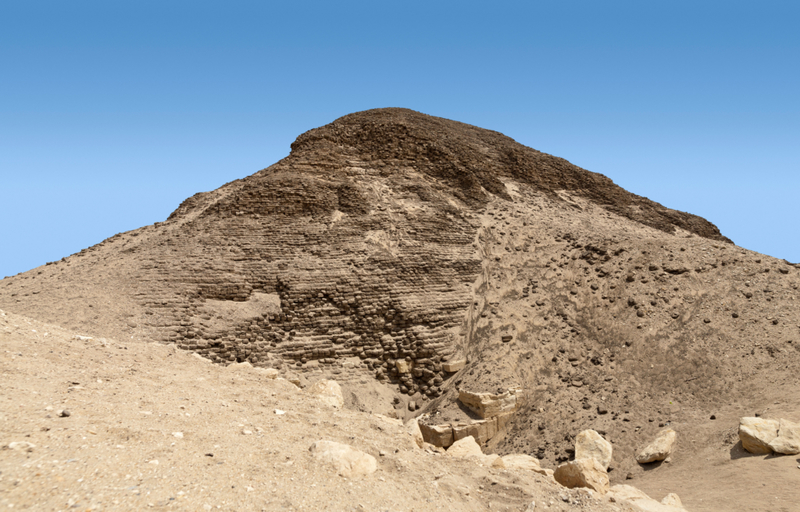
Conspiracy theorists maintain that scientists are keeping this underground world full of catacombs a secret from the public. All that we now know is that the labyrinths under the Great Pyramid stretch 55 miles south of Cairo, underneath Hawara.
A Mysterious Chamber?
One of the most recent findings inside the Great Pyramid was a hidden chamber. Archeologists were only able to discover the mysterious chamber using advanced technological imaging that recorded fragment particles deep within the rocks. They used cosmic-ray imaging, which is similar to X-ray imaging, but it can penetrate farther into the pyramids' structure.
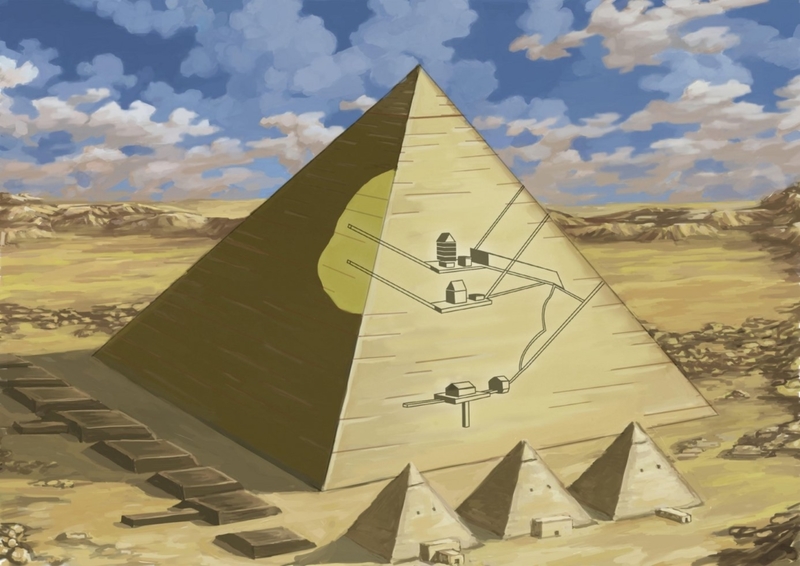
Even though this technology has significantly advanced, the images it provides are still low in quality and resolution. Therefore, scientists are still uncertain whether it is a single chamber or a different room series. They’re also not sure what the chamber was for, and whether something hiding inside it could show us an entirely new perspective about this ancient world...
On the Verge of New Discoveries
It has been hypothesized for centuries that the ancient pyramids could be generating some kind of energy. However, we still don't have any substantial evidence to lead us in the right direction to investigate this theory. After the Great Pyramid's hidden chamber was located, scientists also ascertained that the pyramid collects electromagnetic energy in its interior rooms.
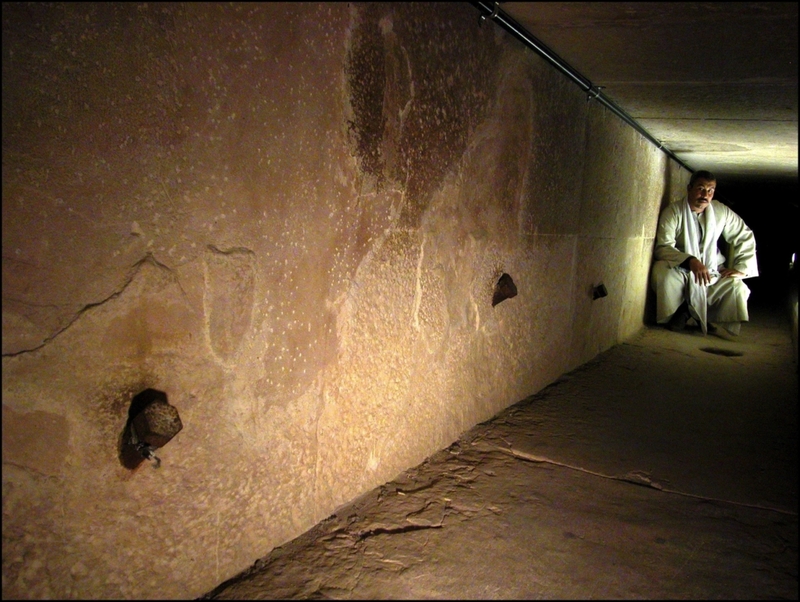
To make things even more interesting, the higher amounts of energy were recorded in the rooms where people found the remains of Pharaoh Khufu and his wife's chamber.
Discoveries From the Inside
On August 1st, 2018, archaeologists made one of the most recent discoveries when they found a precious statue during a restoration project. The statue was found inside the Djoser pyramid in Saqqara, and it depicted Osiris, one of the most well-known Egyptian gods. Archaeologists were baffled by such an unexpected discovery, as the statue was placed inside an unknown crack within the wall.

This discovery was so peculiar because no one could figure out why they would place such a cherished statue in a random spot within the wall. Did it have any meaning? Or was it hidden for some reason? The head of the Saqqara archaeological site speculates that “the statue was probably hidden in this way by a priest of Saqqara in antiquity.”
Mysterious Boxes Inside the Tunnels
Brien Foerster discovered one of the most enigmatic discoveries inside this tunnel; he found 20 boxes built from Aswan granite. These rocks were cut into boxes with staggering accuracy. What’s even more striking is that each box weighs around 100 tons. Some assumed that these boxes were a burial site for prized animals and livestock, yet no evidence has been found to prove this speculation.
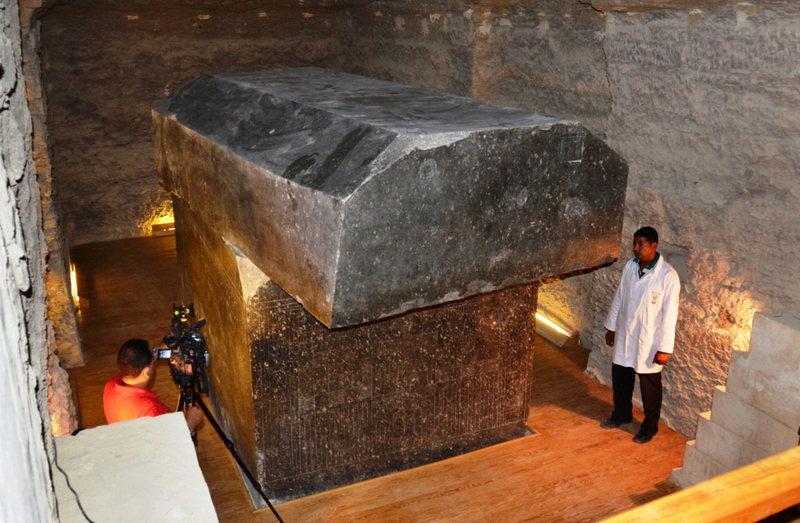
Some experts believed that these mysterious boxes also held some sort of energy. However, more established authorities seem to deny this view. We cannot know whether there is a chance of such a phenomenon, and we cannot be sure that the scholars tell us the whole truth. This is truly a mystery that makes you think.
Some Chambers Can Generate Heat
Scientists have now discovered that the giant pyramids emit heat from some rooms within the chambers while other sections remain cool. So, where could this heat be emanating from? The first hypothesis was that some kind of ancient technology could produce heat. Could this be, or is it merely an accident resulting from their construction?
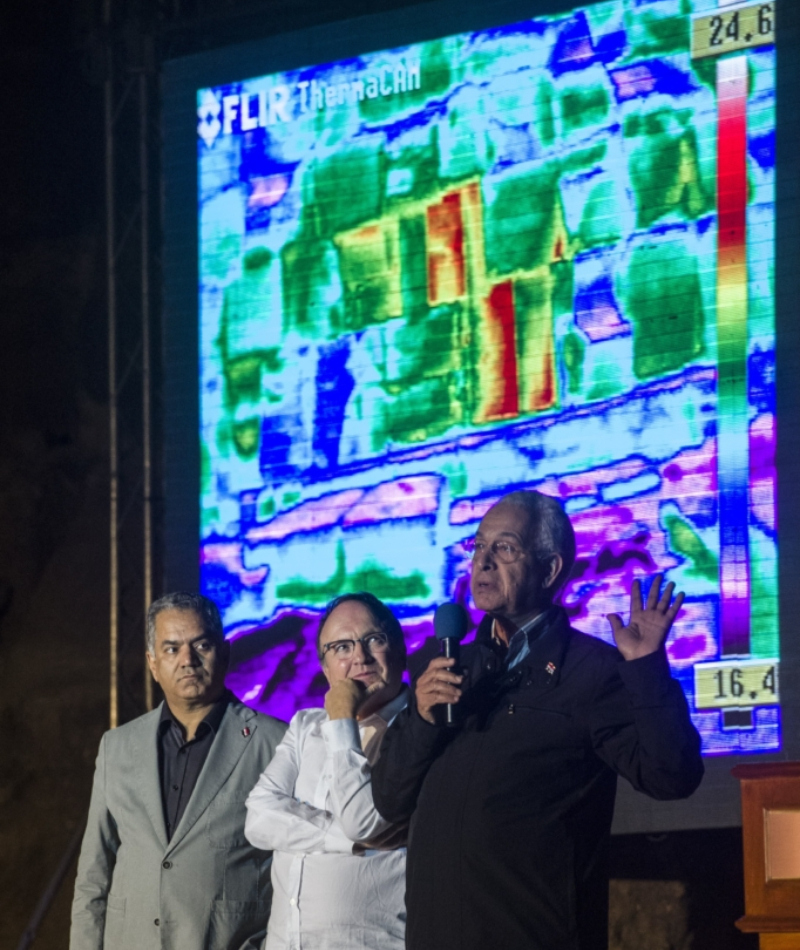
The heat points were located in the upper half of the pyramid. Because of this, we can’t guarantee whether the heat is created by the sun reaching the upper half section of the pyramid or because there are more mysterious and undiscovered chambers.
Was the Great Pyramid a Power Plant?
History books will tell you that the Pyramids were exclusively used as cemeteries for pharaohs and kings. If this is true, why would they build such grand and impressive structures for no other purpose than laying their royals to rest? Some conspiracy theorists share a far more intriguing idea that the Pyramids were power plants and that the ancient Egyptians were a far-advanced society that even had electricity.
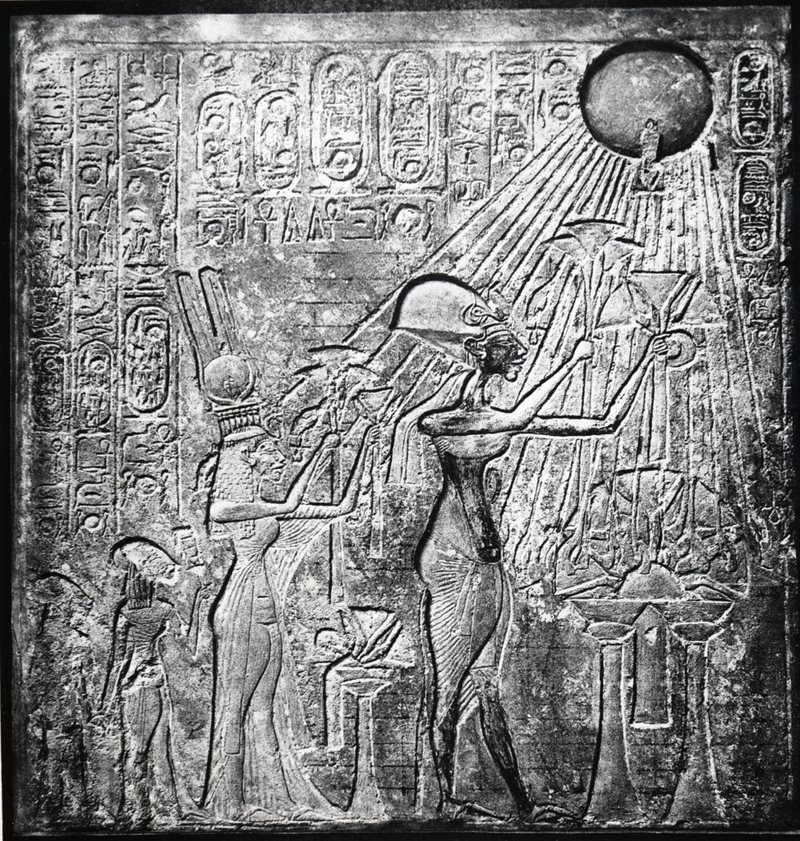
Ultimately, there is definitive proof in etchings that depicted Egyptians holding torches that appeared to be powered by electricity. Also, water flowing through the underground tunnels can create an electrical current. Scientific evidence also proves that the shafts inside the pyramid are crafted from slightly radioactive granite, ionizing the air, and creating an environment comparable to a conductive insulating cable.
Built With Air Shafts
While we're on the subject of shafts, the Great Pyramid was the only pyramid built with airshafts. Nevertheless, nobody can explain why. More importantly, these precise shafts align with the stars, which opens up a whole new set of mysteries. How did they succeed in creating such precise cuts without advanced tools? And what is the significance behind it?

Some assume that the star alignment shafts have to do with sending the deceased to the afterlife. Some more radical conspiracy theorists suppose that these alignments might have been used to signal to aliens. But, not all shafts reach the external area as some were shut off for no apparent reason.
The Massive 20-Ton Pyramid Doors
Believe it or not, the doors entering the pyramid weighed 20 tons, and, even more surprisingly, you could open them with a single push. No human can push a heavy 20-ton door open just like that unless we're talking about the pyramid doors. These doors were constructed with such a precise balance that you could easily push them if you wanted to enter.
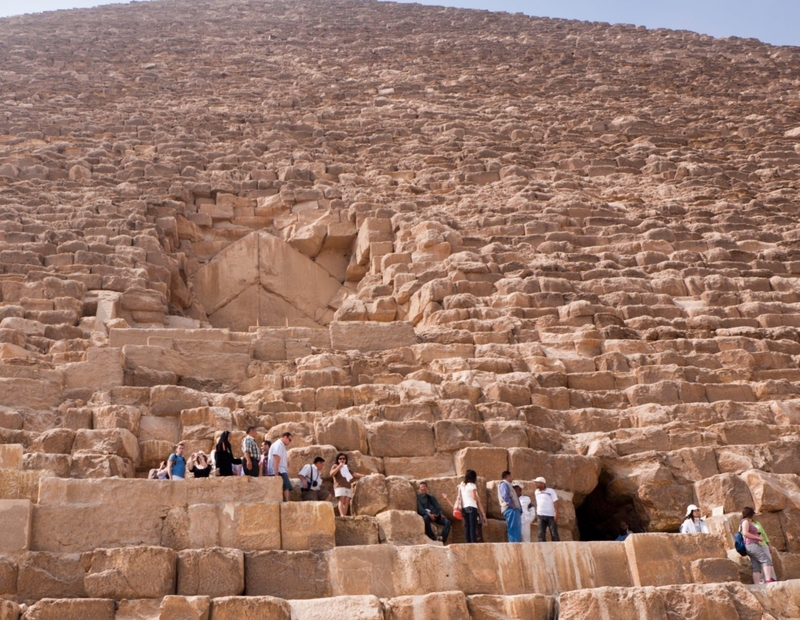
These doors were first discovered when the Great Pyramid was being explored in the 1800s, and it took very little effort to push the doors open from the inside. So, how did this ancient civilization manage to create such an impressive entryway with no technology whatsoever?
Are There Passages to the New Chamber?
One of the more intriguing findings was a new mysterious chamber called the “big void.” After all, it definitely is a void since the chamber is not connected to any passages inside the pyramid. So what was it for, and why did the Egyptians create a totally disconnected chamber? Scientists believe this chamber was built to relieve some of the weight and prevent the Grand Gallery from collapsing in.
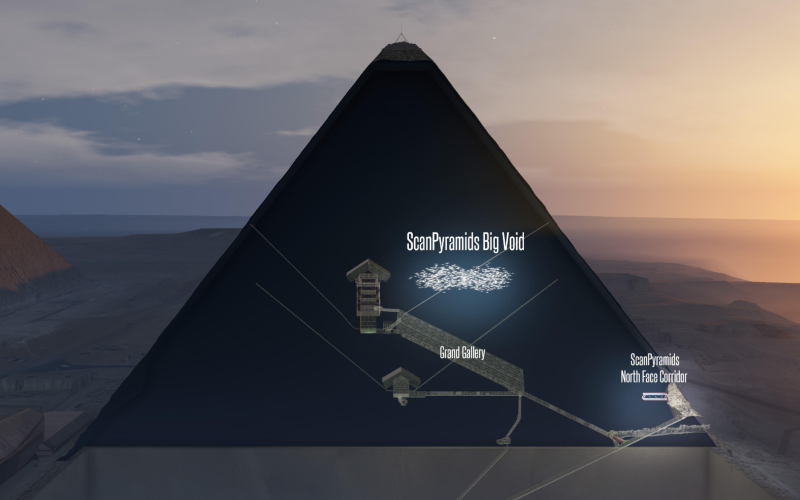
Now, tourists can walk through the Grand Gallery if they hunch down through a long tunnel. The Grand Gallery is attached to the Queen’s chamber, which can also be visited. Overall, the new chamber is about equal in size to the Grand Gallery, and it sits directly above it.
Lined Up With Constellations
It would seem that the ancient Egyptians enjoyed aligning their constructions. It’s not only their shafts that were aligned with the stars. All three Pyramids of Giza are connected to outer space. The Khufu, Khafre, and Menkaure’s pyramids are aligned exactly with the famous Orion’s Belt stars. The pyramids are aligned with three stars Alnitak, Alnilam, and Mintaka.
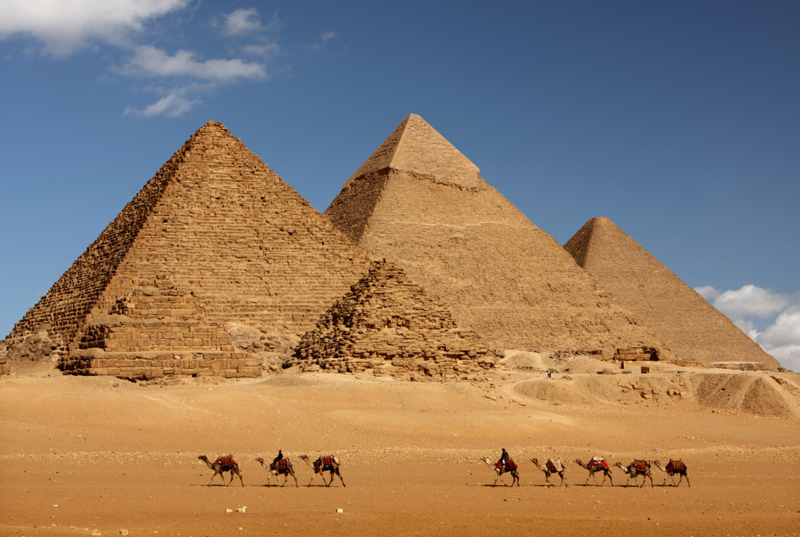
Like many ancient civilizations, the Egyptians studied the skies, taking measurements from the stars to accurately align their pyramids. But what is puzzling is that Orion’s Belt wasn’t discovered until 2000 years after the pyramids were built.
Did the Pyramids Have a Connection with the Sun?
There are those that believe the pyramids were built by aliens, while others hold the more sober approach that the pyramids were used as power plants. If these don't sound plausible, there is yet another speculation, one about the pyramids devoted to supporting their king's ascension to Sun Ra, the God of the Sun.
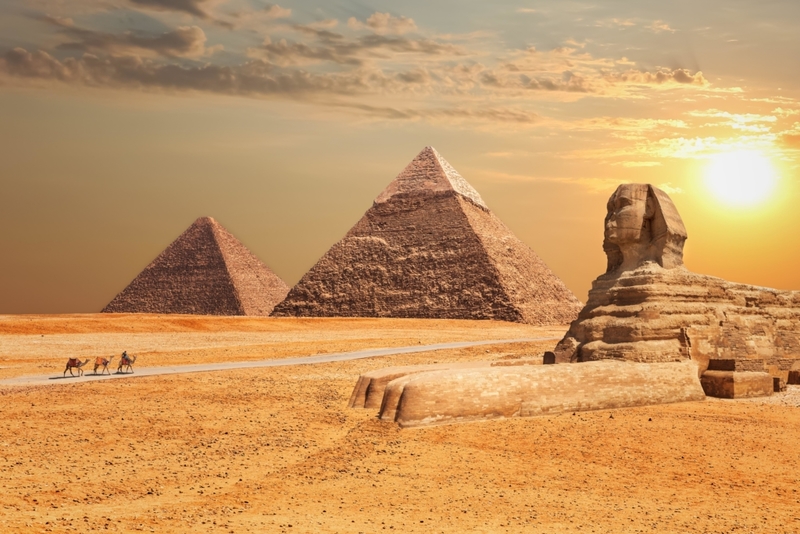
This kind of guidance to the afterlife could clarify why they wanted to align the pyramids with constellations and stars. And that could also be why they buried their kings with objects they could use in the afterlife.
Greater Precision Than the Royal Observatory
It is possible that the ancient Egyptians might have been more advanced than our civilization since their chambers point north with much better precision than the Royal Observatory in Greenwich. We’re not speaking about the general North but the specific direction towards the magnetic North.
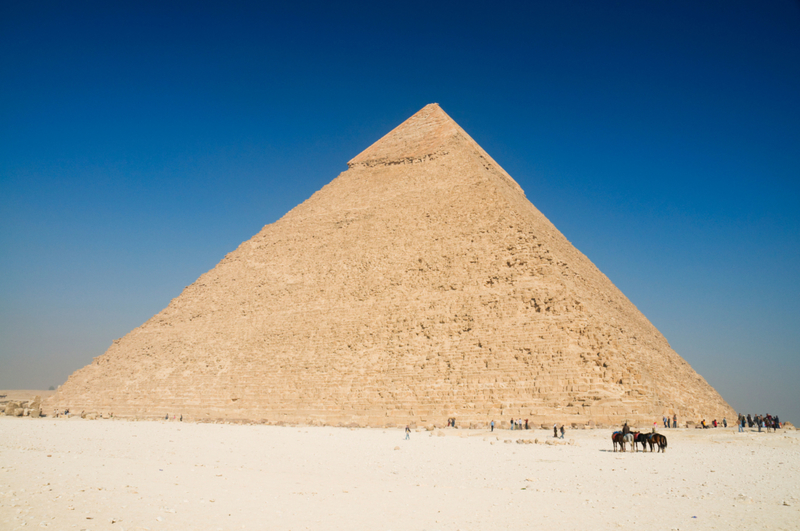
Founded in 1675, the Royal Observatory in Greenwich sets the actual clock to GTC (Greenwich Mean Time or Prime Meridian Time.) If it took so many centuries to build the Royal Observatory, we can't help but wonder what kind of technologies and strategies the Egyptians were working with back in their time?
Evidence of Mathematics
We have some evidence that proves the ancient Egyptians knew mathematical constants. If we subtract the Great Pyramid length from its height, the result we get is 314.16 – 100 times Pi. If we then add the two sides together in meters, it equals 100 times Phi, also known as the Golden Number used in architecture, art, and theology.

What makes this so bizarre is that Pi as an official mathematical constant was not identified until 1793. Ancient Egyptians used cubits to take measurements, where one cubit equaled 0.536 meters. So, the circumference of a circle that has the diameter of a single cubit equals Pi. This means that Egyptians were capable of making complex calculations way before we originally thought.
The Structures Surrounding the Pyramids
Today, it seems like the pyramids stand isolated in a desert area with nothing surrounding them, but it wasn't that way back in their heyday, as many structures encompassed the grand pyramids. However, the pyramids were still essential town structures, despite being surrounded by Necropolis, the allegedly smaller tombs. It’s kind of eerie when we think about it since Necropolis translates to the City of the Dead.
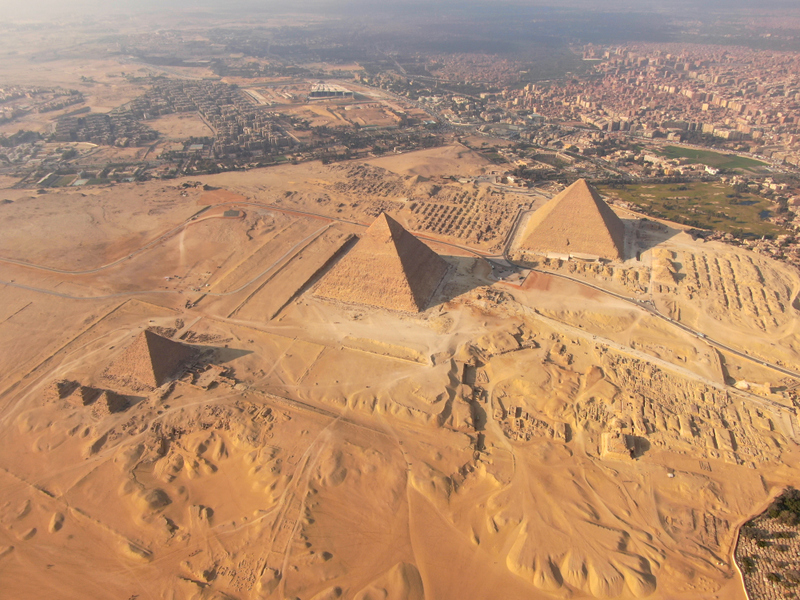
Other structures and buildings in the area included religious buildings and temples for honoring the king. The staff who worked in temples and looked after the kings also lived close by. The majestic Great Sphinx of Giza is also situated near the pyramids.
Who Built the Sphinx?
Just like the pyramids, the Sphinx carries a similar mystery. No one claims to know who constructed it and why exactly it was built. Two theories examine who was behind building the Sphinx. Some maintain that Khafre was the one who created the Sphinx and the second-largest pyramid. If this was correct, it would suggest that the Sphinx was built around 2500 BCE.
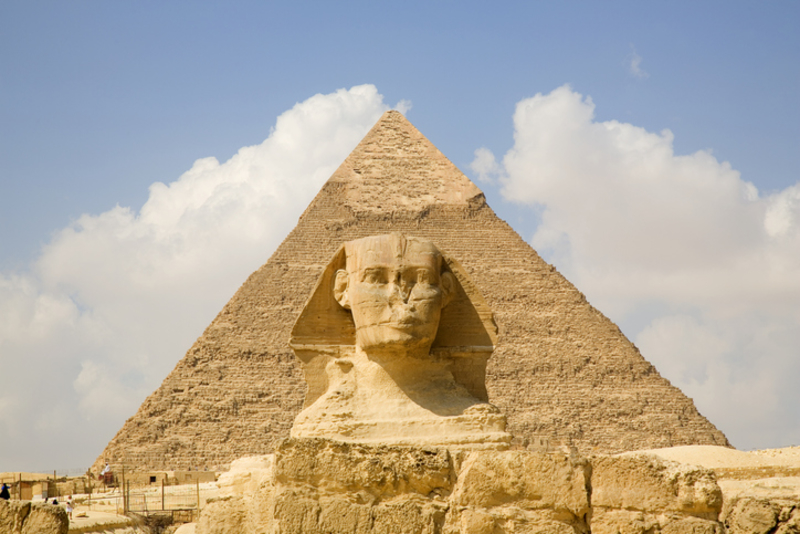
But some archaeologists and scholars hold that the Sphinx is older than Kharfe and that it was commissioned by his father Khufu; he was the one who ordered the building of the Great Pyramid.
17 New Pyramids!
As if all these discoveries weren't enough, archaeologists and scientists have also uncovered 17 more pyramids. They used satellite technology to detect hidden structures underneath Earth's surface, and they found 17 pyramids around Giza. But that's not all; they also revealed over one thousand burial sites hidden underneath the sand in the area thanks to their infra-red technology.
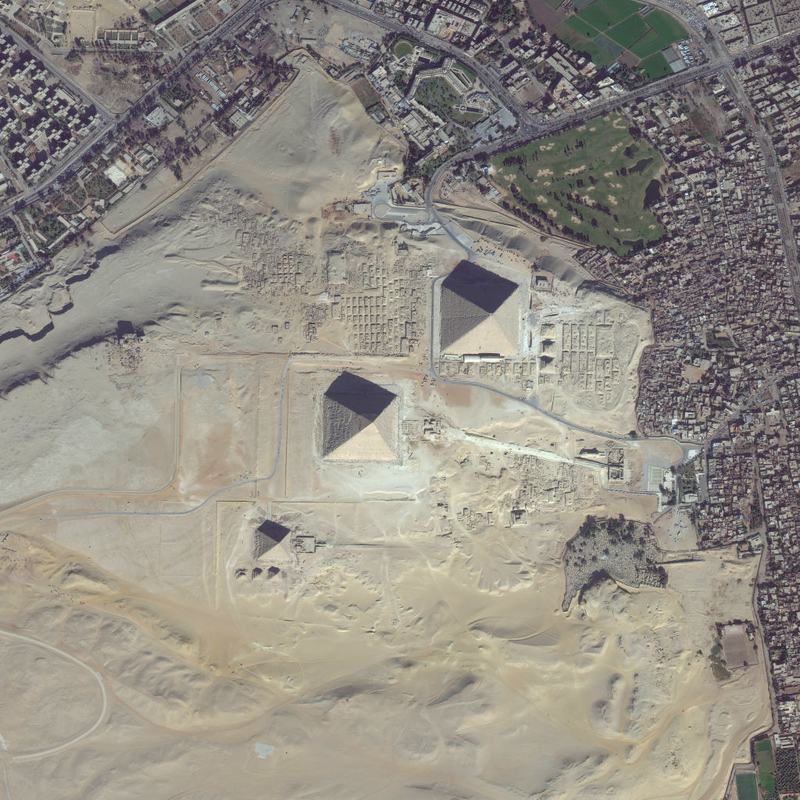
Crews on the ground are already studying and examining two of these newly discovered pyramids. Even though new pyramids are still being found, the oldest one remains the Pyramid of Djoser.
The Oldest Pyramid
The oldest of all known pyramids, the Pyramid of Djoser, is believed to be built during the 27th century BC. Unlike the Great Pyramid which is surrounded by burial sites and graves, the Pyramid of Djoser is enclosed by a courtyard and numerous ritual embellishments. The structure has sustained a lot of damage, as weather conditions severely corroded it.
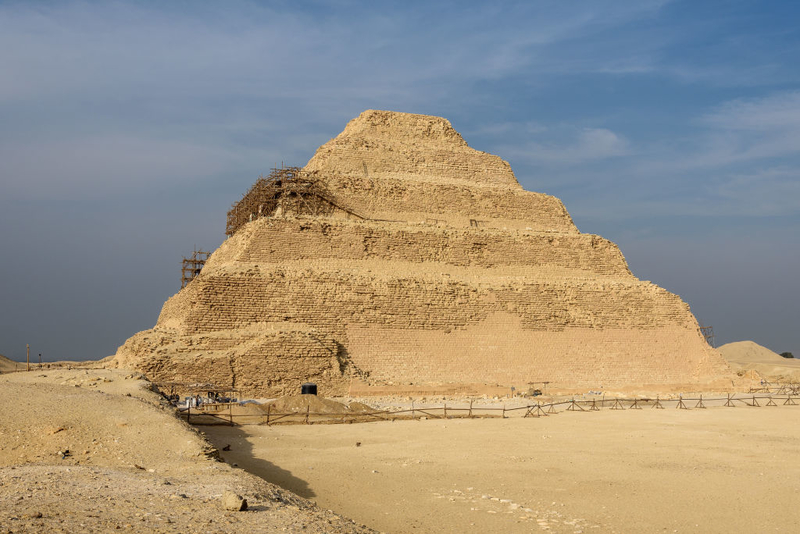
Unlike other pyramids, the Pyramid of Djoser also features a smaller pyramid edifice known as the mudbrick structure, which comprises multiple complexes. Inside this pyramid, we will find a burial chamber, but, surprisingly, archaeologists did not find a body inside it when the pyramid was discovered. There is some indication that the pyramid may have been used as King Djoser's tomb.
A Structure Taller Than the Pyramid of Giza
The Pyramid of Giza held the title of the world’s tallest structure for a total of 3 871 years. In other words, it took humanity approximately 4,000 years to construct a new building taller than the pyramid. The next tallest structure that came close was the Lincoln Cathedral in England, which was built in 1311. What’s even more surprising is that the ancient Egyptians built the pyramids in 20 years, but building the English Cathedral took more than 200 years to build!
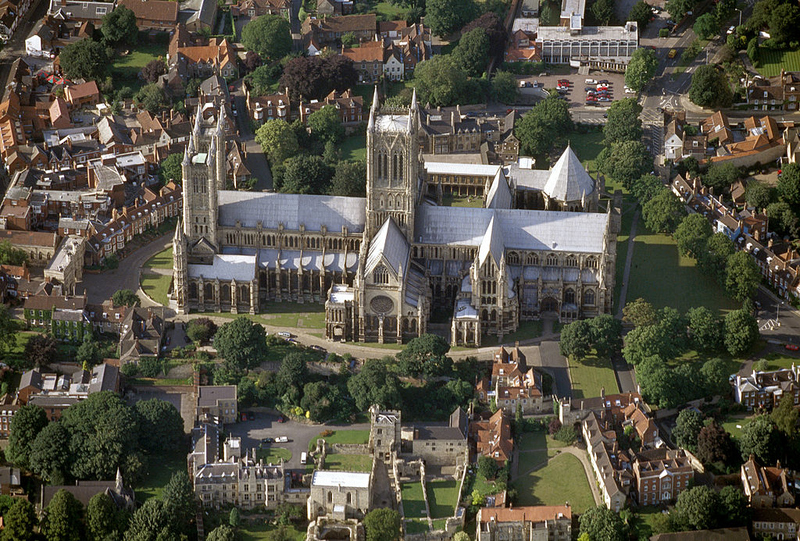
If we look at the Cathedral of Lincoln now, we wouldn’t consider it to be taller than the impressive Pyramid at Giza. Nonetheless, that’s because the Cathedral’s central spire collapsed in 1549, after which it was never reconstructed. This Cathedral was the world’s tallest building for a total of 238 years, but its importance lies in the record it broke!
The Last of the Seven Ancient Wonders
It is important to mention that the Great Pyramid is the only one of the Seven Ancient Wonders of the World. This is quite unbelievable because it was built between 2584 and 2561 BCE. There is no doubt that this ancient structure has managed to stand the test of time as inclement and oppressive weather conditions could not destroy it throughout the centuries.

The Statue of Zeus was ruined by an earthquake, just like the Hanging Gardens of Babylon. The Temple of Artemis was wrecked and ravaged by a Christian mob in 401 CE, while the Colossus of Rhodes was toppled down in 654 CE. In other words, none of these structures could compare to the pyramids in durability and strength.
On the West Embankment
It seems peculiar that pyramids were all built on the same side of the river Nile – along the west embankment. The pyramids had to face the Sun as it was believed that the Sun was the dead's home. Another reason is that the Egyptian kings dreaded that they would be robbed after death, which is why they took their gold and valuables into their tombs. They believed the pyramids could protect and guard them in the afterlife as well.

As brilliant as their plans and complicated designs had seemed, they weren’t quite sufficient to prevent grave robbers. Even though the bodies were buried in chambers that could be reached only by those who knew their way around the secret passages, grave robbers still managed to locate their way to the lavish tombs.
Into the Afterlife
Ancient Egyptians devoutly clung to their beliefs in the afterlife. That is why Egyptians were buried with different objects and possessions supposed to help them in the afterlife. These objects included everything from gold to expensive jewelry to random everyday items, even food!
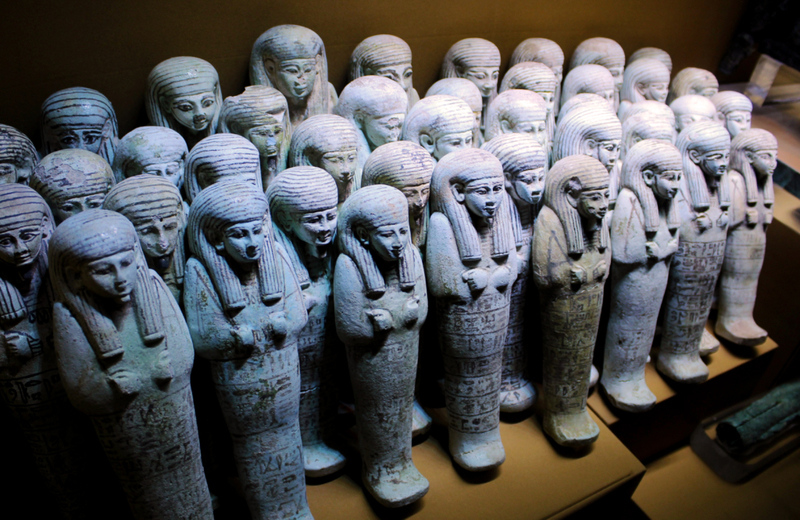
Another thing Egyptians attempted to bring along to their “afterlife” were little statues. Historians and archaeologists eventually discovered that it was believed that these miniature statues come to life in the next world to help and care for the pharaoh. When one tomb was found, archaeologists recovered over 400 statues inside.
A Kurdish Ruler and the Pyramids
Someone brave enough aspired to demolish the pyramids and ruin the Ancient Egyptian legacy in the 12th century. Al-Aziz, a Kurdish ruler, wanted to destroy the pyramids, so he went along and tried to execute his plan but he soon found that destroying the pyramids would be as expensive as it took to build them, and he gave up soon after.

Al-Aziz did manage to leave his mark on the Menkaure’s Pyramid. If you visit the pyramid today, you will see a massive slash on one side. That’s all that Al-Aziz managed to achieve during his intention to demolish one of the most stunning structures in the world. This score stands to establish just how unyielding and sturdy these structures genuinely are.
Seen From the Moon
According to scientific estimations, the pyramids could have been seen from the moon, thanks to their reflective surfaces. Even the people residing in the hills and mountains in neighboring Israel could view the majestic pyramids.
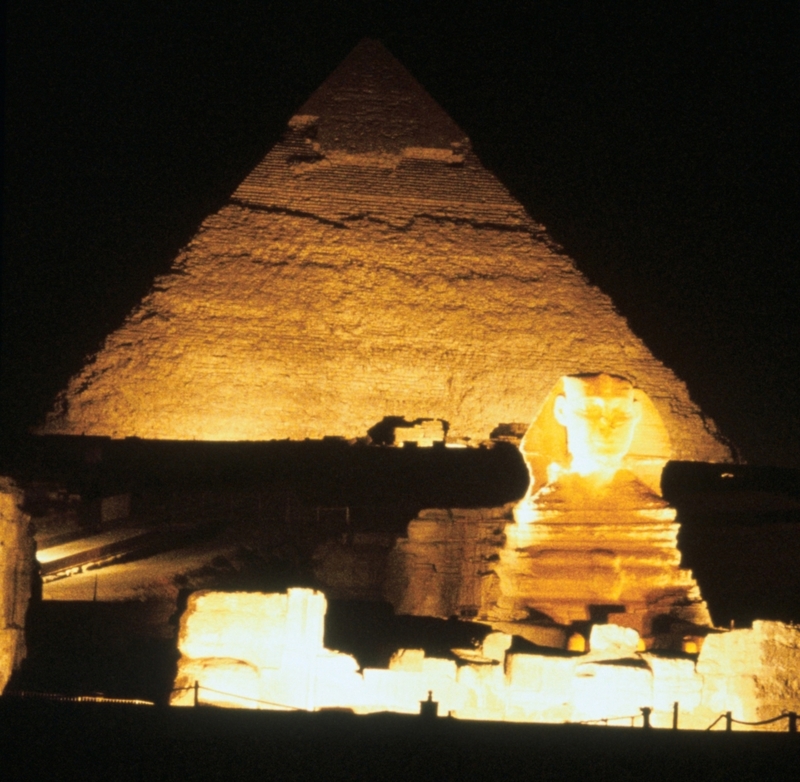
The ancient Egyptians termed the Great Pyramid “Ikhet,” which translates to “glorious light.” Nevertheless, we will never honestly know how bright the structure was.
The Temperature Inside the Pyramids
Even though it was evident that some parts of the pyramids produce mysterious heat, the building itself remains comparatively cold on the inside. The official temperature readings show that the most common temperature inside the pyramid is around 68 degrees Fahrenheit. So not only did the ancient Egyptians create such an architectural masterpiece, they incorporated a cooling system using nothing but “archaic” tools.

The pyramid’s ventilation system is made of airshafts that were strategically placed. Once these shafts are opened, they immediately let cool air inside the chamber. As soon as you open them, the temperature in the chamber drops quickly. However, what is so mind-blowing is that no matter the temperature outside, the temperature inside the pyramids always remains 68 degrees. No one knows how this is possible without any machinery and technologies maintaining the temperature.
The Pyramids Were Not Built By Slave Workers
We used to think that the pyramids, just like everything else, were built by slaves. However, recent research proves that the pyramids were constructed instead of paid workers who spent hours upon hours designing and planning these elaborate structures. It took over 20,000 people to build the pyramids, and these paid workers were highly valued for creating this work of art.
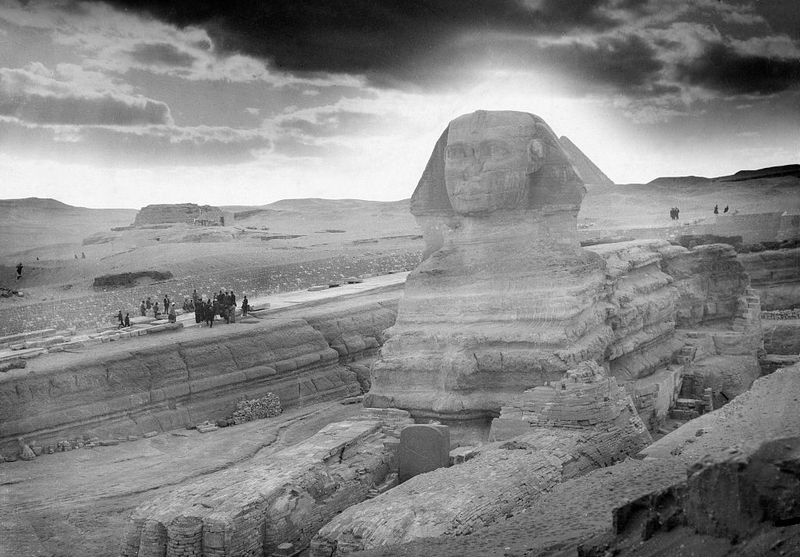
The evidence about these paid workers only came out in 2010. Before that, we all accepted that it was slaves who labored to build the pyramids at Giza. Archaeologists unearthed tombs of the paid workers during an assignment, and the fact that their bodies had been preserved in the sand and buried along with food explains that these people were not poor slaves.
The Substance Used to Glue Bricks of the Pyramids
We do not doubt that the pyramids are the most stable structures in the world. They were built of stone, but the ancient people needed something to keep the stones together. Unfortunately, even contemporary experts still don’t know what was used to glue the rocks together. It is evident that some kind of adhesive had to be put in place, but they still haven’t figured it out.

For all we know, the “adhesive” that ancient Egyptians used is incredibly strong. This strong paste between the massive stones is so strong that it has made the pyramids indestructible and able to resist earthquakes, unfavorable weather conditions, and intentional attacks.
The First Pyramids
As pyramids are geometrical shapes, they have four sides and a pointed tip, but not all pyramids have this point towards the sky. In fact, the earliest Egyptian pyramids originally had flat covers. These constructions did not even resemble the typical pyramids with triangular sides. They were, however, used as tombs, just like the rest of the pyramids.
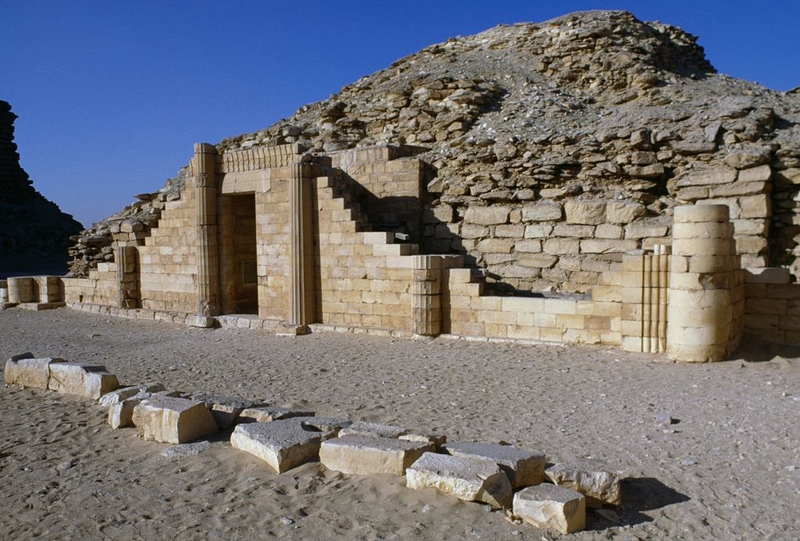
One of the oldest of Egypt's pyramids with a flat top is the Pyramid of Djoser, which is also the oldest pyramid in Egypt. All pyramids contained burial chambers, whether they had pointy tops or were flat. Although, the flat-top pyramids, known as Mastabas, had one particular purpose.
The Tombs of the People
Mastabas were small tombs with flat tops that contained their hidden chambers underground. However, it was not pharaohs who were buried in these tombs, but their loyal subjects. They were not as important to have their own pyramids, but they were given a place to rest in the flat-topped Mastabas.
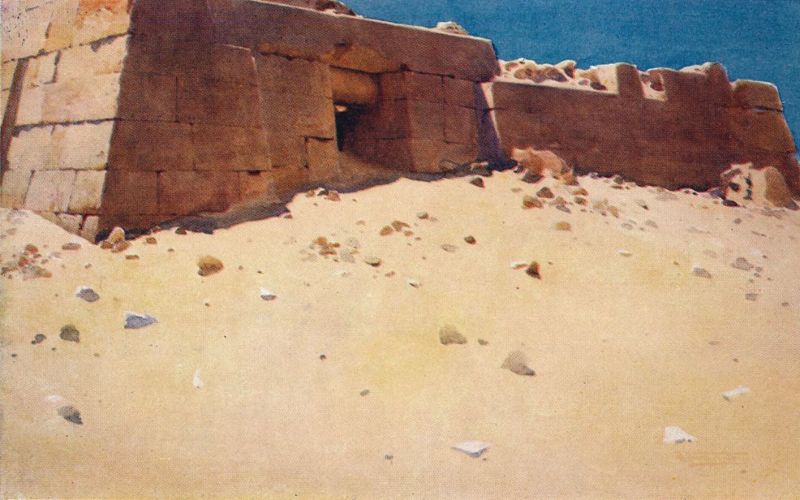
Pharaohs wanted to bury their loyal subjects because they believed they would help and tend to them in the next world. Another popular Egyptian belief was that the dead needed to be guided so that their soul could move on to the afterlife.
The First Pyramid Architect
Many people are familiar with Imhotep, the famous character from the acclaimed movie, "The Mummy." And it was Imhotep who designed the first Egyptian pyramid. Imhotep was one of the most notable architects of his time, and he was also the chief minister of Djoser.

Imhotep outlined and planned the pyramid from the first blocks to the top. Because of this, King Djoser appreciated him so much that he authorized a statue to present Imhotep's name in the King's court, which was an honor like no other at the time.
The Egyptian Afterlife
We already established the purpose of the pyramids – to guide the kings' and pharaohs’ souls into the afterlife. Egyptians seemed to have been obsessed with the afterlife. Therefore, they considered that life after death entailed returning to our origins.

However, unlike life on Earth, the ancient Egyptians maintained that life in the next world would be free from suffering and anguish of any kind.
The Hieroglyphics
We often associate hieroglyphics with the Egyptian pyramids, even though hieroglyphics were never encountered inside the pyramids. But there are chambers that are so small that only tiny robots can enter and explore them and a recent finding by one of these robots presented evidence of what seemed to be hieroglyphics.

The robot with a camera attached was able to capture footage of what looked like the first-ever hieroglyphics found within a pyramid. Maybe these symbols could explain and clarify some of the mysteries attached to these ancient remains.
Could the Pyramids Tell Time?
The pyramids' incredible design was also planned in such a way that it wouldn't cast any shadows at noon. In other words, the Great Pyramid was not only an immemorial tomb but also a sundial, and it is one of the most complicated sundials ever built.

Sundials were used as one of the earliest objects to tell time. These age-old clocks would cast a shadow based on the sun's position and tell the time as accurately as the contemporary clocks we have today. What is positively startling is that ancient people succeeded in building such a large pyramid and using it as a sundial.
The Amount of Stones Used to Build the Pyramids
If we were to take all the stones used to build the pyramids, we could make a wall around France's entire border. We could theoretically make a ten-foot-tall wall solely utilizing these stones. The wall would be one foot thick, and it would probably be one of the sturdiest walls in the world.

This leaves us questioning where the ancient Egyptians acquired so many of these massive stones. Several experts hold that these were rocks that were collected around the Nile while others came from the nearby Quarries of Aswan. These sites still exist today, even though most of them have been flooded many times over the centuries.
Not a Tomb
The purpose of the Great Pyramid at Giza persists as the biggest mystery surrounding the ancient pyramids to this day. Because we are still nowhere near the truth, this enigma might persist for years to come. There was never an actual corpse or a mummy discovered in the Great Pyramid at Giza, causing many experts to deem that this pyramid was never meant as a tomb.

The pyramid was first explored back in 820 AD by Arab travelers, who only encountered a granite box identified as the “coffer.” This could suggest that the tomb was looted, and the mummy was stolen. However, there is still a chance that the Great Pyramid was not intended to be a burial site at all.
The Location Has a Special Meaning
According to the calculations by Dr. Joseph Seiss, he arrived at this thrilling conclusion in 1877, that the pyramids are located at the precise location where the world's most extended lines of longitude and latitude meet. The pyramids continue to surprise us, was this ancient nation aware of this when constructing the pyramids, or is it a genuine coincidence?
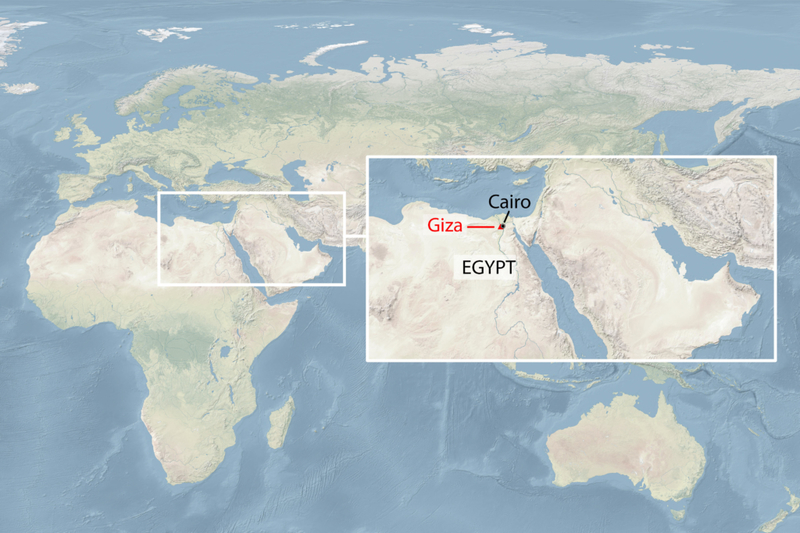
If it is a coincidence, then it is quite an exceptional one. This means that the Pyramids at Giza are so far the most carefully aligned structures in the entire world for all we know.
New Discovery Confuses Experts
Egyptologists were excited when they found a new pyramid, but what they found below left them with more questions than before! The discovery was made in Dahshur, a royal necropolis located in the desert on the Nile's west bank, around 40km from Cairo.
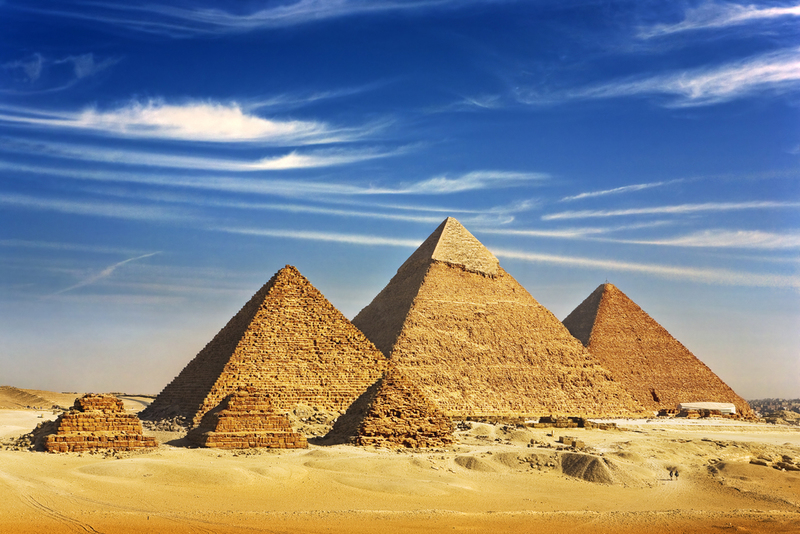
Archaeologists also unearthed the foundation of an immense tower that belonged to the 13th Dynasty. During the last few years, archaeologists have carefully investigated and examined the remains, eventually making their way down to the burial chamber.
Mystery Woman
Bits and pieces of wood were found in this burial chamber and they have finally been secured together; it turns out this is a coffin lid with a beautifully carved face. The restoration has unveiled something surprising; this isn’t a king; it is a mystery woman.

The answer may lie in another article found near her grave, a case decorated with hieroglyphs. Experts were not only shocked by this discovery of this mystery lady within the burial chamber, but they also had no inkling who she might be.
What Is The Mystery Woman's Name?
Coffins typically had similar features to the owner but were idealized because they would look like for eternity. The mystery woman was wearing the Hathor wig that was common throughout the Middle Kingdom and was worn only by women. What’s significant about this case is that we know it belonged to a princess because it reads ‘daughter of the king,’ with her name following.

But her name has the most damage to it, which is very frustrating for the experts. Ancient Egyptians held firmly to the notion that the worst thing you could do to someone was to erase their name.
A Special Crown
This specific kind of design is particular to a king; it’s not what we would expect a lower royal family member to be in. Usually, a princess would only have a shaft tomb with a chamber at its base, making this entire discovery such a cryptic puzzle.

They also found other relics from the same era, including the crown of a Princess from Dahshur, made out of gold and decorated with semiprecious stones. The newly uncovered tomb believably contained materials very similar to this, many precious metals like gold, which was probably stolen a long time ago.
100 More Coffins
The Egyptian antiquities authority has published a discovery of at least 100 ancient coffins, some with mummies still inside, and about 40 intricate statues in a huge Pharaonic necropolis south of Cairo.

Sealed sarcophagi and statues that were laid to rest more than 2,500 years ago were presented in a makeshift display at the feet of the famed Step Pyramid of Djoser at Saqqara. Archaeologists opened one coffin, with a well-preserved mummy encased and bound in cloth.
The Latest Findings
Khaled el-Anany, the tourism and antiquities minister, said in a news interview that the objects date back to the Ptolemaic dynasty that ruled Egypt for 300 years from about 320 BC to about 30 BC.

He clarified that they would move the artifacts to at least three museums in Cairo, including the Grand Egyptian Museum, which Egypt is building near the famed Giza Pyramids. This acquisition at the renowned site is the latest in a range of archaeological findings in Egypt.
Still More to Discover
With all these spectacular discoveries, there is still more to unearth, but urban development and sprawl threaten this cultural heritage. By no means has everything been explored and excavated around the Pyramids and its surroundings. The same is true of the great catacombs and tombs like the one in Saqqara.
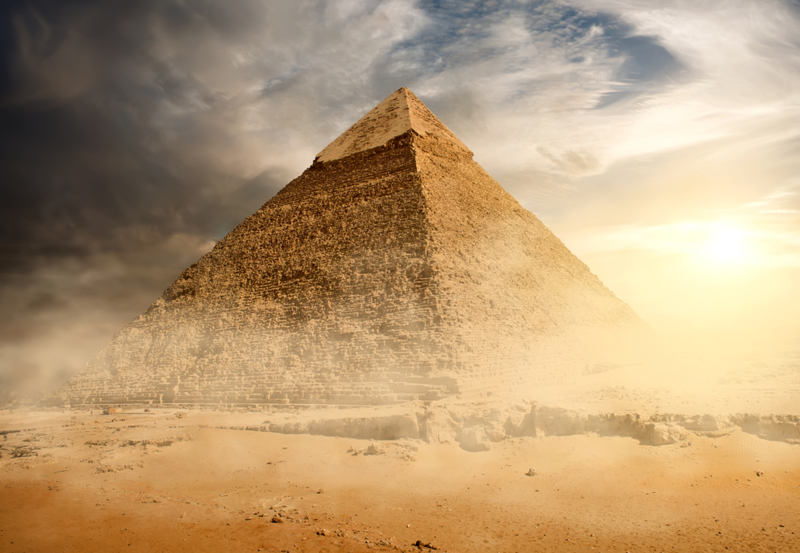
For over 3,000 years, it was the main cemetery of the Egyptian capital, Memphis. If we were to look at old maps from the early 19th century, we could see that there are many sites to be excavated; archaeologists just haven’t gotten around to it until now.
It's a Race Against Time
Even with the Egyptian Ministry of Antiquities' active support, the teams of archaeologists and scientists are under tremendous time pressure. It seems that many people are considering going to Egypt as well at some point because of these fascinating discoveries.

Nowadays, there are far more sight-seeing opportunities than there were just a few decades ago. And that, of course, is also always a good reason to go back to Egypt.
How to Read Hieroglyphics
Those cool picturesque writings found in the pyramids hide a wealth of stories in them. While this wasn't the main writing system in Egypt (that was hieratic), hieroglyphics are still fascinating. But how do you even start? Which direction did the Egyptians read from? Well, all over. Hieroglyphics can be read from left to right, right to left, or top to bottom, depending on the will of the storyteller.
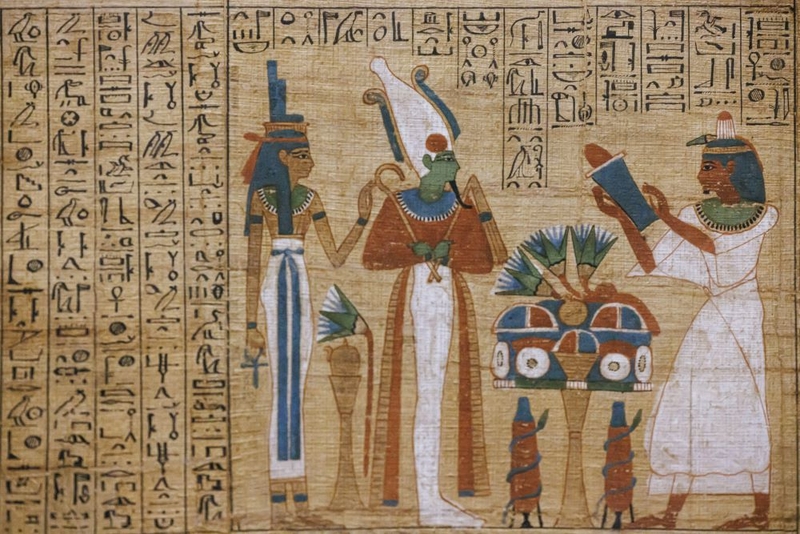
Here's the trick: look at the birds and the men. They face the direction of the start of the text. So, if they are facing left, then you read the story from left to right. If they are facing right, you read the story from right to left. It doesn't tell you if the writing is to be read from top to bottom or from bottom to top, but it's a start.
Depictions of Gods
Whether it was in the pyramids themselves or other tombs near them, there are a host of depictions of the Egyptian deities to be seen. It's hard to summarize how influential the gods were in Egyptian life; every natural force was represented by a deity, and there wasn't an aspect of ancient life that they didn't touch. Understandably, the Egyptians wanted their support in their journey to the afterlife.
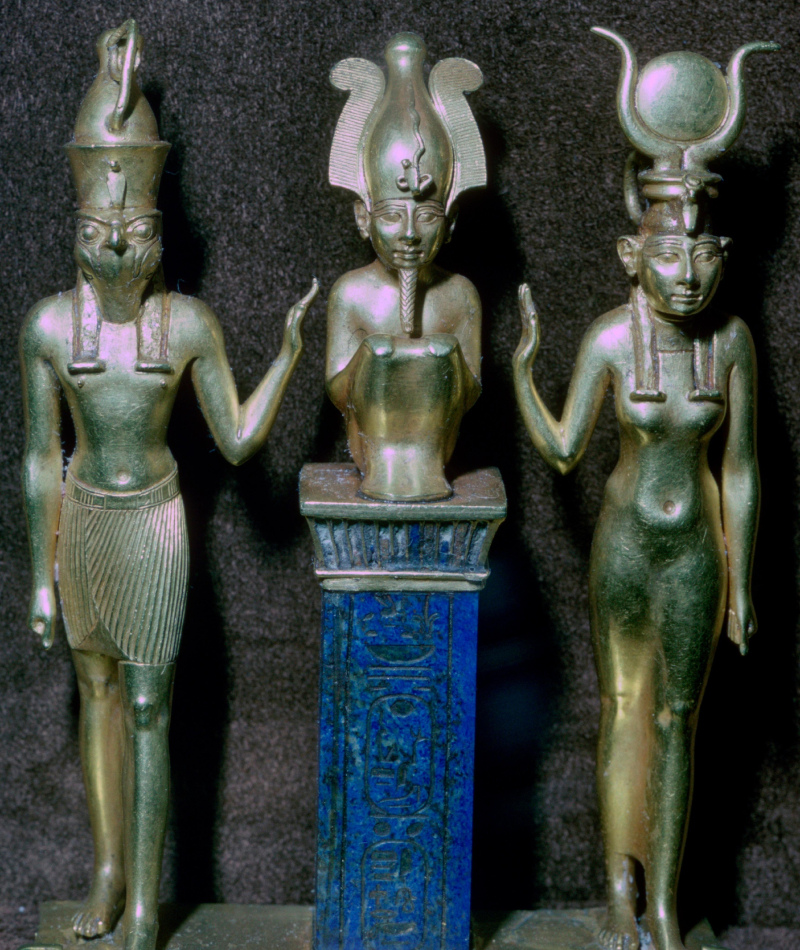
Aside from the famed statue of Osiris found in the Pyramid of Giza, depictions of Ra, Horus, and others have been found in tombs in the Valley of the Kings. What exactly the Egyptians hoped the gods would do for them is unclear, but they weren't prepared to take the risk of not invoking their help.
Animals Galore
The Saqqara necropolis was a breakthrough discovery in Egyptology, and one of the reasons for this was the presence of animal mummies. Crocodiles, cats, lion cubs, this place had it all. But why? The Egyptians brought with them a host of things to accompany them on their trip to the afterlife, sometimes even their pets (well, we assume they were pets for the most part).
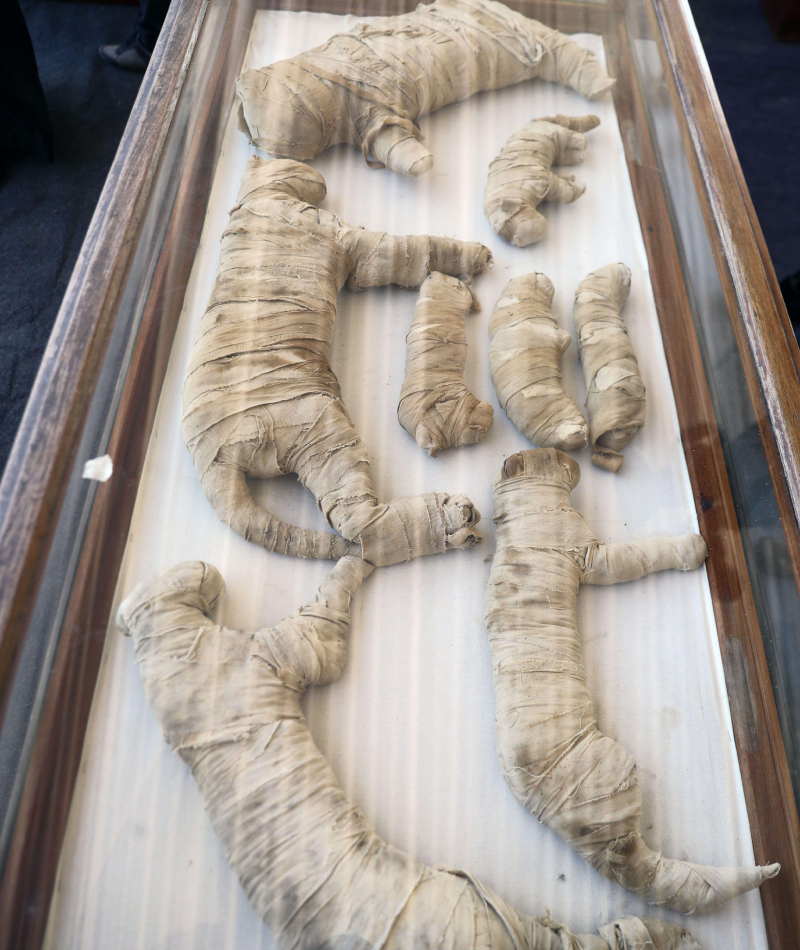
Another reason is that the Egyptian deities were all personified as animals, so burying animals in the same way as humans (that is, they were embalmed and mummified) was to honor the gods. Somewhat unfortunate for the kitties who didn't know what was coming, but that was the job.
A Biblical Misconception
There is a long-standing myth that the Israelites built the pyramids, which makes a certain amount of biblical sense given that the Old Testament describes their time as slaves in Egypt. The thing is, the Bible doesn't say that the Israelites built the pyramids, and the whole thing is likely a result of a faux pas.
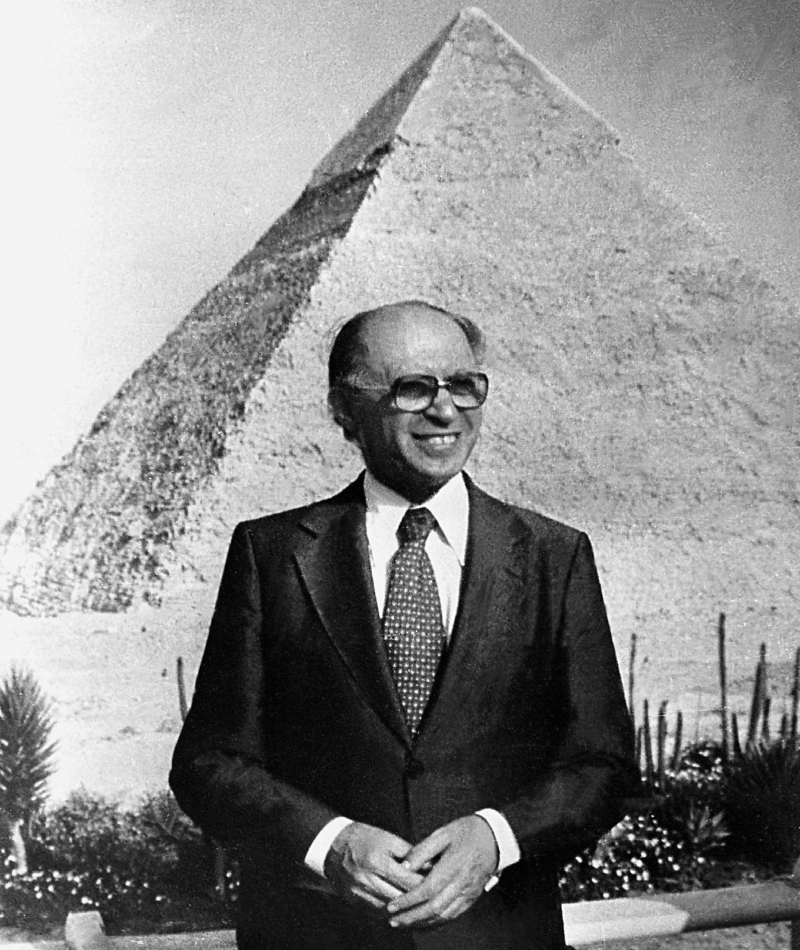
In 1977, ex-Israeli Prime Minister Menachem Begin visited Egypt and claimed that the Jews built the pyramids. From there, the myth was set in stone. The Bible describes that the Israelites built the Egyptian cities of Pithom and Rameses, and modern archeology tells us the pyramid builders weren't slaves at all, and were actually regular village workers who probably lived nearby.
The Pyramid Texts
The Pyramid texts are found on the walls inside some pyramids, and they depict various religious incantations. They trace back as far as the Old Kingdom Period and originally, it seems that they were purely decorative. Pharaohs would embellish their resting places with these texts, and over time, queens and other high-rankers also wanted them. Still, these spells weren't only for show.

The practical side was that these texts armed the deceased with the knowledge that they would need for their journey to the afterlife. One famous instance of the Pyramid Texts is in the Pyramid of Teti, a pharaoh of the Old Kingdom.
Ancient Egyptian Archeologists
The Egyptian empire lasted over 3000 years and it saw centuries of changes in leadership and topography. But with such a long timeline, it means that the ancient Egyptians of the Late Kingdom were digging up artifacts and conducting archeological digs of the even more ancient Egyptians. What a mind warp!

By the time Ramesses II ruled, some pyramids and other artifacts were already over 1000 years old. There are records of restoration and labeling projects for pyramids and other monuments whose origin was unclear. With all of our modern technology, this is still a big task today — how much harder must this have been back then?
Breaking Down the Timeline
We know that the Egyptian empire lasted 3000 years. Which is almost incomprehensible. So, let's break it down and understand where the pyramids fall in the timeline. The Egyptian empire periods are labeled as 'kingdoms' or 'intermediate periods,' where 'kingdoms' refer to times of stable, central governments and authorities, and the 'intermediate periods' were times of strife and political instability.
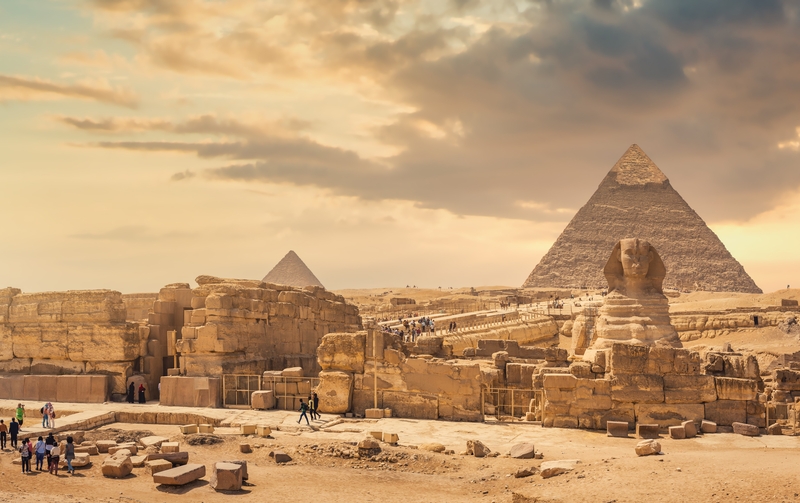
The empire started with the Old Kingdom (2613-2181 BCE), then lapsed into the First Intermediate Period (2181-2040 BCE). Then the Middle Kingdom reigned (2040-1782 BCE) before falling into the Second Intermediate Period (1782-1570 BCE). Finally, the New Kingdom arose (1570-1069 BCE) but Egypt ultimately fell into the Third (and final) Intermediate Period (1069-525 BCE). The pyramids were built during the Old Kingdom, way back at the start.
Khufu's Ship
If you were an ancient Egyptian pharaoh preparing for your journey to the afterlife, what would you pack for the trip? Well, Pharaoh Khufu was somewhat of an over-packer and included a 142-foot-long wooden ship. The ship was buried in the Giza Pyramid complex near the foot of the pyramid. It was discovered in 1954, and even though it needed a good few years of restoration, it was remarkably intact, especially for an artifact built around 2500 BCE.
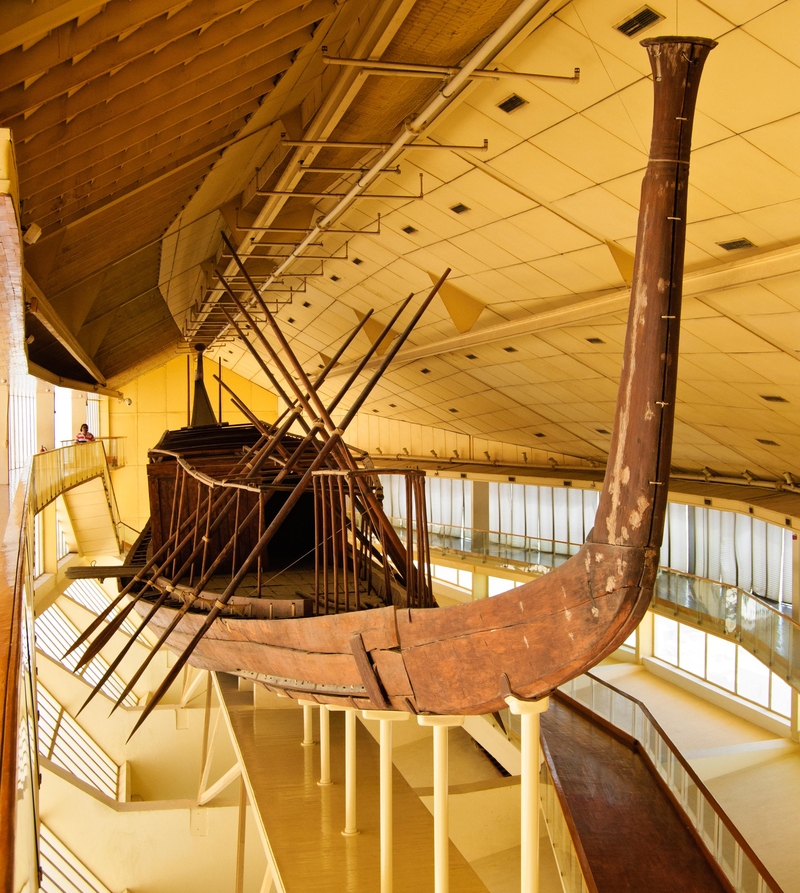
Its function is disputed, whether it was only used symbolically to accompany Khufu to the afterlife, or whether it was actually used as a ship in its day (there are signs of it being used in water). Astonishingly, after its restoration, it would be able to sail today.
Cleopatra's Burial Site
Were all pharaohs and queens buried in pyramids? Unfortunately not. The pyramids were exclusive to the Old Kingdom (2613-2181 BCE). We're not sure what was in the water, but it was a time of great building and innovation and apparently great wealth. But for a number of reasons including political instability, financial woes, and what seems to be a shift in the funerary process, pyramid building eventually fell out of use.
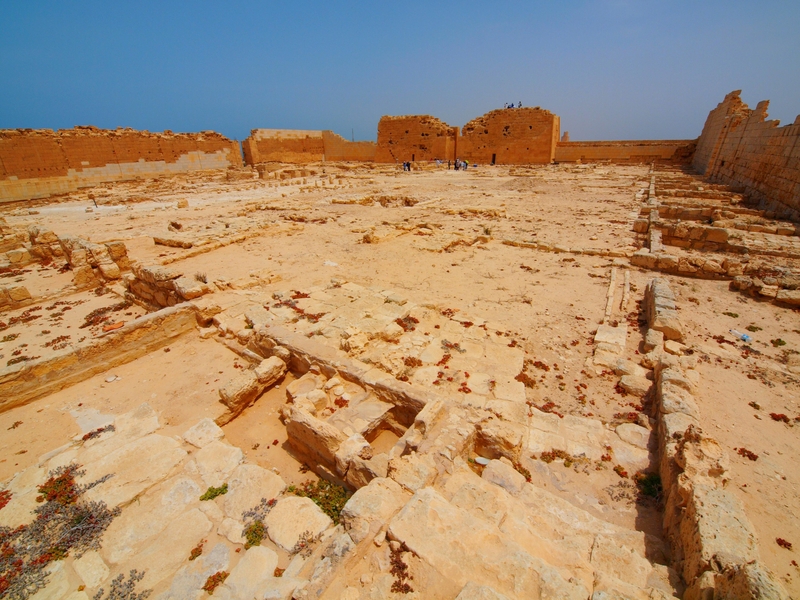
By the time Cleopatra reigned (51-39 BCE), the pyramid tombs were already distant memories. As the last active ruler of Egypt, Cleopatra made her own mark on history and was buried appropriately, though probably not as lavishly as the first rulers of Egypt. Oh, by the way, she's MISSING and no one knows where she is buried.
Spells and More
The Pyramid Texts offered a vault of insight into the funerary practices of ancient Egypt. Covering whole walls, these hieroglyphics were imperative to helping the soul reach its final destination. So, what was on them? First, there are a lot of spells (incantations might be a better word, they were a little more respectable than what you see on TV) related to offerings and rituals for guiding the soul through its journey.

Second, they depicted the soul's journey to the afterlife, often imploring the Egyptian gods to help in various ways. They also often included accolades of the pharaoh or queen in question, stating how they have benefitted Egypt.
Mum(my)'s the Word
In another episode of "We Didn't Think the Ancients Could Do That," we learn that until recently, archeologists thought all mummies were natural accidents. That is, it was thought that the exceptionally intact state of Egyptian mummies was because of environmental features. We didn't know that the Egyptians actually knew that their processes of embalming and mummifying corpses would keep them in such good condition.
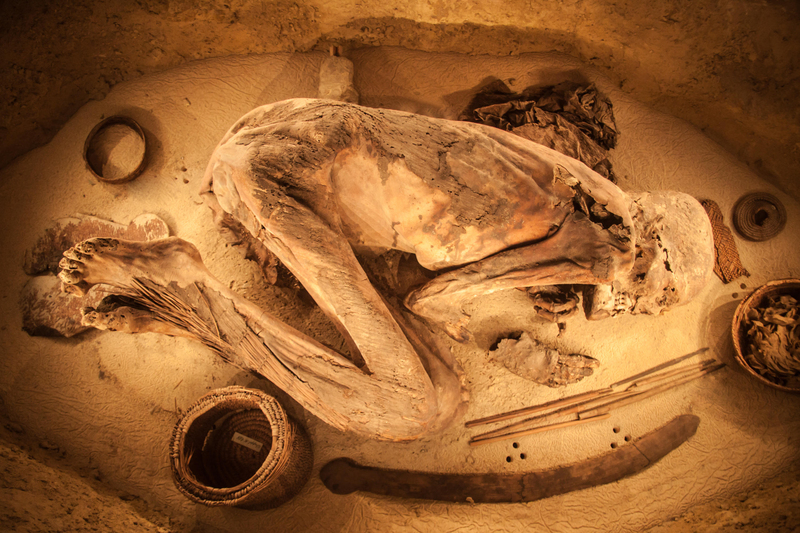
Turns out, though, that they were well aware, and that was the point. A 5,600-year-old mummy was discovered and tested in 2018, and it showed undoubted signs that it had been treated and wrapped in such a way that would ensure the preservation of the corpse.
The Pyramid of Unas
This pyramid is the perfect illustration of 'dynamite comes in small packages.' Unas was the last king of the 5th Dynasty, towards the end of the Old Kingdom. His pyramid is one of, if not the smallest of the whole Old Kingdom, but it's one of the most significant. Inside this all-but-ruined-looking pyramid is the best-preserved set of Pyramid Texts to date.
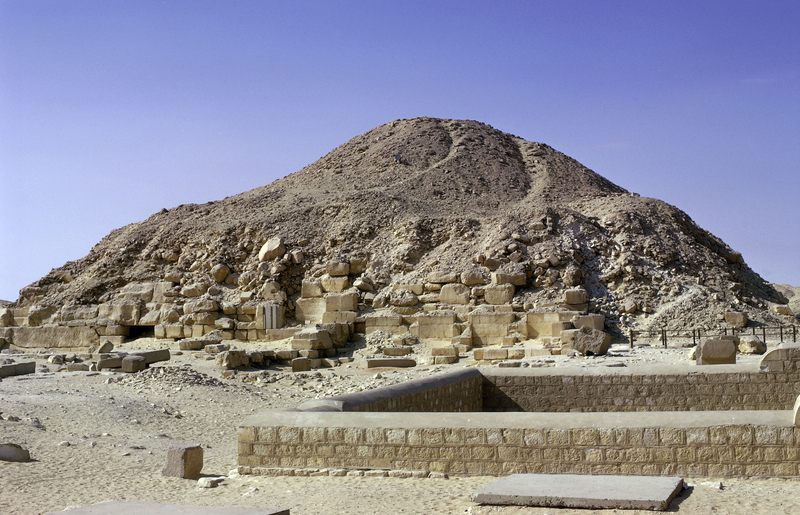
The walls of the burial chamber are filled with inscriptions that are all in immaculate condition. A total of 283 spells are recorded there and it's clear that the layout of the texts in Unas' pyramid was used as the basis for future pyramids. That's a pretty impressive legacy!
Khufu's Secret Corridor
Khufu's Great Pyramid is a treasure of antiquity, and something that big is bound to hold many secrets. Near the pyramid's entrance was a corridor that had been intentionally sealed up back during the pyramid's constriction. Archeologists were fascinated with what could be inside, but there was a problem. It was completely closed up. And given that we're in the era of research without destruction, scientists had a tough time finding non-destructive ways of peeking inside.
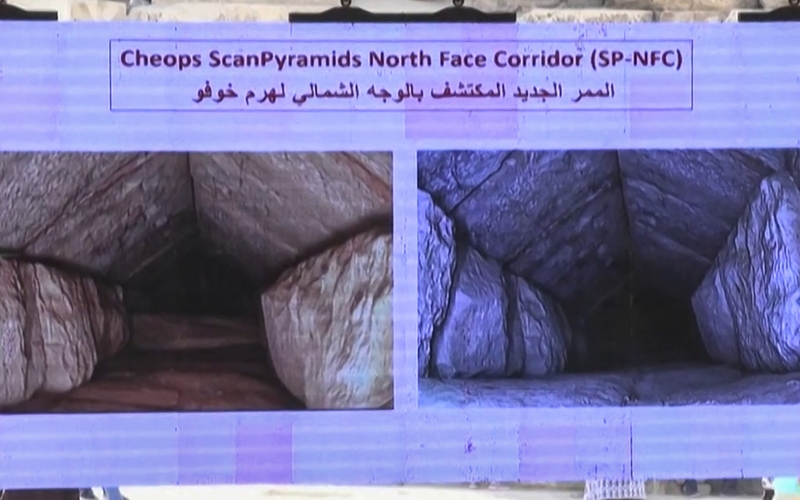
After many years and lots of technology, they got in. And guess what? It's empty. The purpose of the corridor is unknown but some practical guesses include it being a way to relieve pressure from other rooms in the pyramid and distribute the weight. So, not all that exciting, but pretty advanced, if you ask us.
Not Only Pharaohs
While the vast majority of pyramids belonged to the royalty of the day, there were some exceptions. One such exception was Khay, the vizier of Egypt to Ramesses the Great. The vizier played an exceptionally important role, making Khay Big Guy number 2 in Egypt at the time. His honorific was "the First Royal Herald of the Lord of the two lands" — and it was as important and as fancy a job as it sounds.
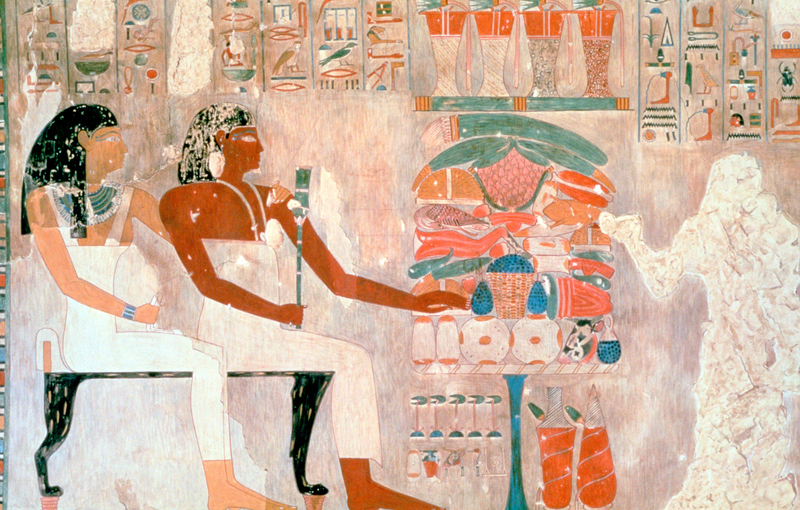
FYI — the "two lands" being referred to are Northern and Southern Egypt before they were united into one realm. The pyramid was discovered in Luxor and while it had been partially dismantled, it once stood at about 50 feet high. Not bad for just a noble.
Khu-who?
When you read about the ancient Egyptian pyramids, you won't be able to avoid one name: Khufu. Who exactly was this famed pharaoh? Khufu, also known as Cheops, was the king during the Fourth Dynasty, still early in the Old Kingdom. Even by ancient Egyptian standards, this guy is ancient. Given that he lived thousands of years ago, it's understandable that not much is well-documented about his reign.
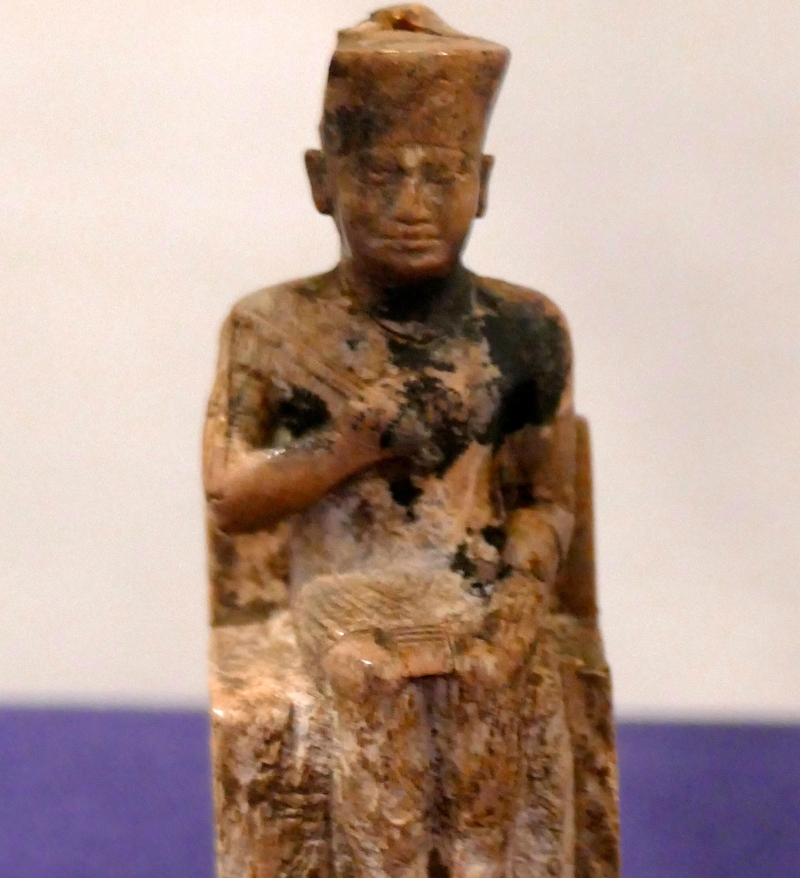
However, there is one signature trademark; the Great Pyramid of Giza. The oldest of the Seven Ancient Wonders of the World, the pyramid contains a surprisingly large amount of graffiti bearing the king's name. Also, many of his family members were buried in or near the pyramid.
Ramesses The Great
Arguably the most famous pharaoh, Ramesses did achieve a lot in his life. Such accolades include reigning for 67 years, signing the world's first-ever peace treaty, and having potentially over 100 children. Ever the over-achiever, you'd think he'd commission a tremendous pyramid. However, no. See, between the 18th and 20th Dynasties, an impressive necropolis known as the Valley of the Kings was where pharaohs and many nobles were buried.

Seeing no need to break tradition, and being around 90 years old, so having missed his chance anyway, Ramesses The Great wanted to be buried in the Valley as opposed to commissioning a new pyramid (which, to be honest, was becoming outdated by his time).
The Valley of the Kings
The pyramids were mainly a feature of the Old Kingdom, so what did future dynasties do? They built the Valley of the Kings (and Queens, but that's discussed elsewhere). A fancy necropolis, the Valley of the Kings was the go-to burial ground for around 500 years between the 18th and 20th Dynasties.
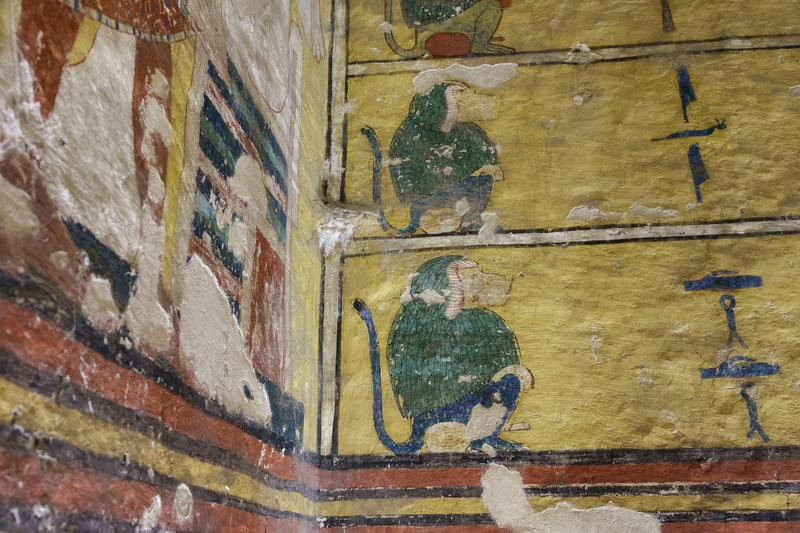
It is split into the West Valley, known as the Valley of the Monkeys (spoiler, NO monkeys, just a carving of some baboons on a wall), and the East Valley, where the majority of the royal tombs are. Plagued by grave robbers over the millennia, the Valley of the Kings has seen better days, but it remains as valuable as the pyramids in terms of its insight into ancient Egyptian life.
Valley of the Queens
The Valley of the Queens was the resting place for around 500 years of the royal and noble women of ancient Egypt. Beginning in the 18th Dynasty, entry was a little more lax, and some male nobles also found their way in. However, by the 19th Dynasty, security got tighter and burial spots were only granted to royal women.
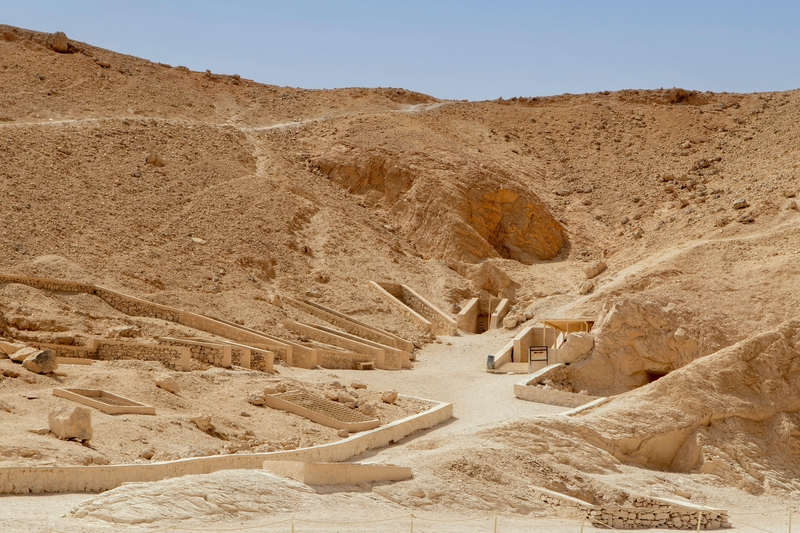
During the 20th Dynasty, the Valley was still widely used, but some papyri tell us that economic turmoil ensued by the end of the 20th Dynasty, even including workers going on strike. This marked the beginning of the end of the Valley of the Queens, and it fell out of use following the 20th Dynasty.
Grave Robbers
No, we're not talking about the Europeans. This was an inside job, of sorts. We know that the bulk of the pyramids were built during the Old Kingdom, and by the time the Middle Kingdom rolled around, looting was not uncommon. Fair enough that there wasn't much security around the pyramids, but it does indicate the lack of respect for the royalty and religion of the time.
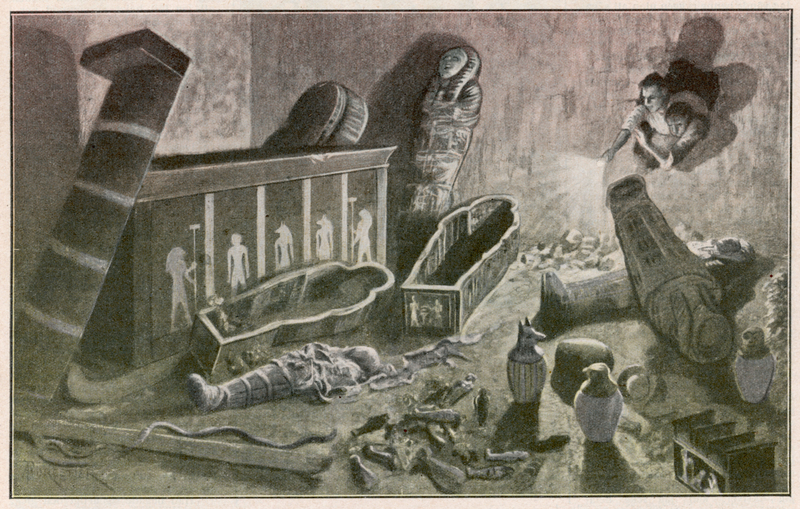
By the time of the New Kingdom, practically every pyramid had been robbed. New doors had to be added to corridors in the pyramids to prevent more theft. The Valleys of the Kings and Queens also weren't safe, with even mummies being in danger of post-mortem kidnapping.
The End of the Pyramids
For someone who doesn't understand the timeline of the pyramids, it would be easy to assume that every pharaoh and queen had one or at least made use of one for something. Ptolemy, Cleopatra, where are they? Well, by the time the Ptolemaic Dynasty arose, the pyramids were ancient history to the ancient Egyptians themselves.
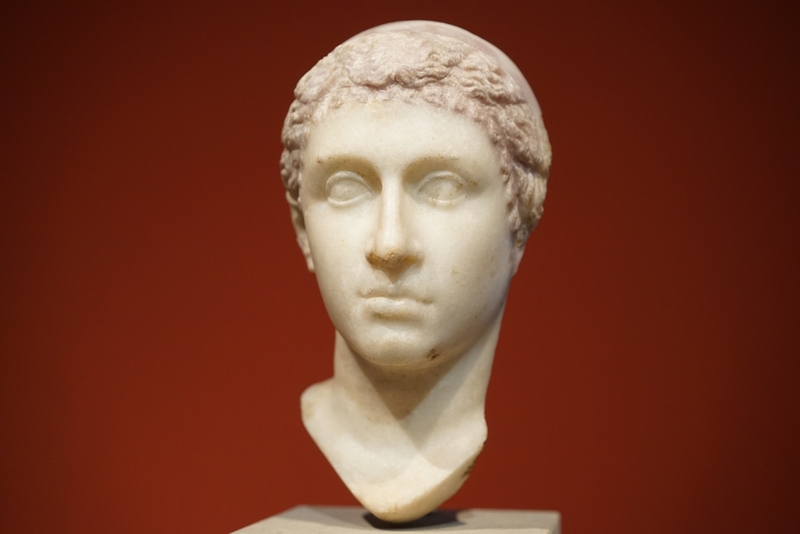
These things took years to build and a phenomenal amount of resources, not to mention the amount of labor required. Pair that with the on-and-off political and economic strife that a 4000-year-long span can bring, and it's understandable that the pyramids were better left as relics.
Whose Pyramid Was Whose?
While some pyramids have their entire inner walls lined with text about the person buried there, things aren't so clear in other places. In fact, many pyramids are attributed based on surrounding research, but nothing conclusive comes from the inside. Researchers can look at the time the pyramid was built as their best marker, but many of the inscriptions inside are illegible due to erosion or tampering.
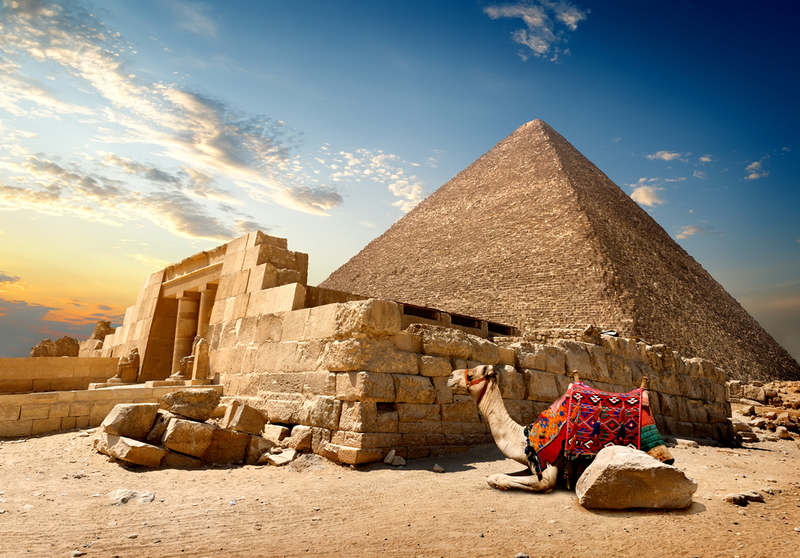
Some boast stories and spells, but no name. Even some of the sarcophagi found inside are empty. While this could be the work of grave robbers, it's also possible that they were never in use in the first place, and the pyramid was always empty. Many mysteries hide in these walls.
Giovanni Battista Caviglia
The name might be unfamiliar to you, but you know this man's work. Caviglia was an Italian explorer active in the early 1800s, whose best work involved exploring the Great Pyramid of Giza, the Great Sphinx, and discovering the Colossus of Ramesses The Great. Caviglia was employed by Henry Salt, the British Consul General, as well as many other collectors.

Caviglia was a dedicated researcher and Egyptologist, and much of the knowledge we have today of the pyramids and ancient Egyptian life today is thanks to him. Eventually, he retired to Paris to live out the rest of his life, but his career lasted well into his 60s.
The Bent Pyramid
Greatness isn't achieved overnight. The Egyptians went through a few versions of their pyramids before they perfected their structure. One in-between architecture type was the Bent Pyramid. Also known as a blunted, false, or our favorite, rhomboidal pyramid, this famous structure went by many names.
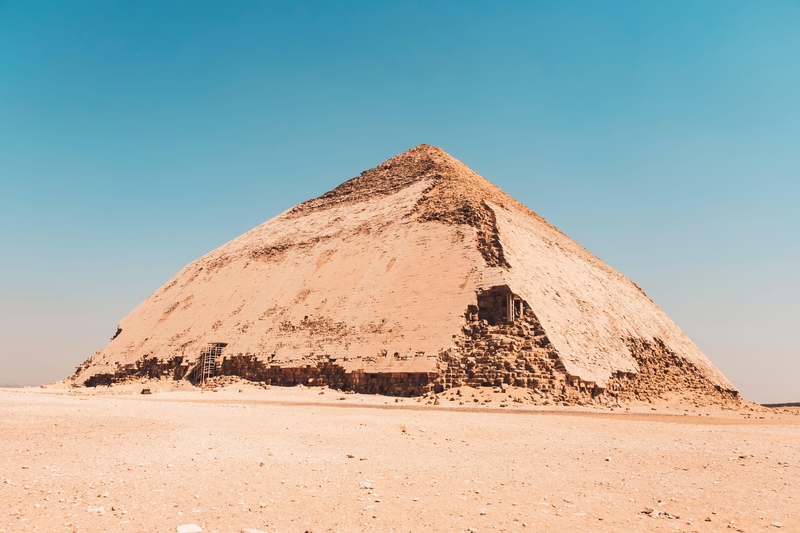
It was built by the pharaoh Sneferu (a king in the Old Kingdom) and it marked an important transition stage from the pyramids of the past. It's unclear exactly how they looked in their heyday, but today they are pretty decrepit. They look a little rounded and funny, but they indicate fantastic strides in construction.
The Pyramid Building King
King Sneferu was an Old Kingdom king who reigned as the first pharaoh of the Fourth Dynasty. Sneferu was a keen builder and his most famed projects were the three pyramids he commissioned. Pyramids until Sneferu's time were stepped, meaning that the layers got smaller and smaller as they reached the top, creating a step-like effect. Well, Sneferu was having none of that. He wanted a perfect triangle, and boy was he rich.

The result? Three pyramids, each better than the last. He built the Meidum Pyramid (not a great triangle), the Bent Pyramid (getting closer but, as the name suggests, missed the mark), and the Red Pyramid (a triangle if we've ever seen one). His pyramids paved the way for Khufu's later Great Pyramid of Giza.
The Pyramid of Teti
Teti was the first king of the Sixth Dynasty, and the son-in-law of Unas (that will be important). Not a ton is known about his reign, but sources do indicate that he was assassinated by his bodyguards. Having made provisions (for death in the general sense, at least), Teti had a pyramid built for him in the Saqqara complex.
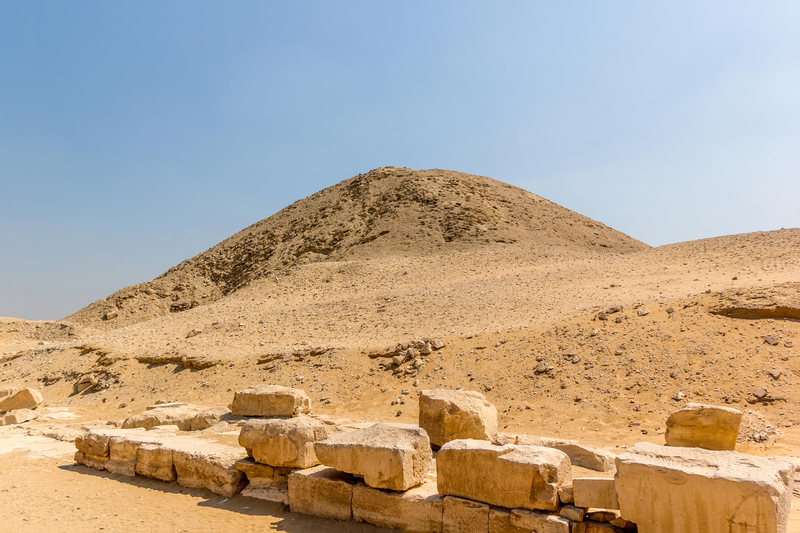
Seeing Teti's pyramid today, you might mistake it for any old sand mound — there isn't much to speak of today. However, inside revealed the second known set of Pyramid Texts; spells and stories carved into the walls of the burial chamber. The first Pyramid Texts found? Teti's pop-in-law, Unas!
False Doors
While some fake doors were added to pyramid corridors to confuse graverobbers, many pyramids contained one false door that served a more honorable purpose. False doors were added to the walls of the pyramid chapel and functioned as a place where people could place offerings on behalf of the deceased.

These doors were considered the gateway between the worlds of the living and the dead, so while they often boasted impressive looks, they weren't just for decoration. As time went on and both pyramids and Old Kingdom funerary practices fell out of use, false doors became rarer. Today, they are markers of the time period and the religion thereof.
The Whole Familia
Usually, the pharaoh or noble who commissioned the pyramid building didn't do it just for themselves. Located around most pyramids are whole necropolises, with smaller tombs surrounding the pyramids. These tombs were reserved for the family members of the pyramid's owner, ensuring that the entire family remained together on their journey to the afterlife.
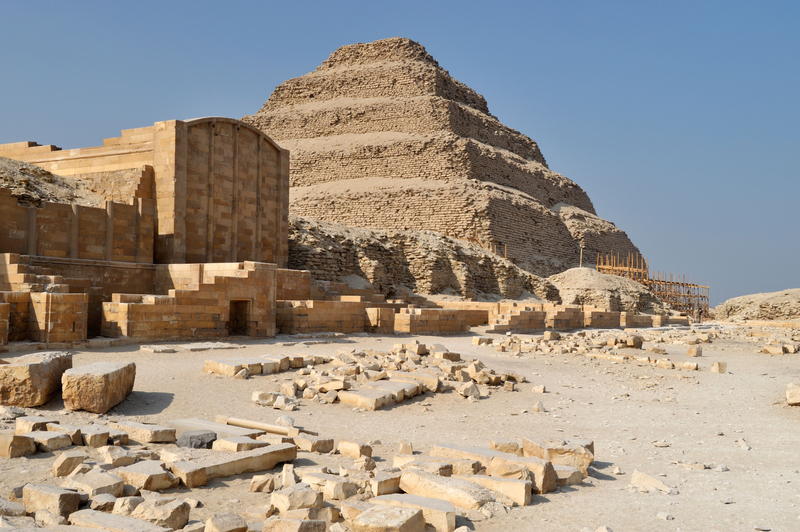
It's not so easy to spot them today as many are covered in sand, but researchers have uncovered an impressive number of these necropolis complexes that show just how extensive these building projects really were. One of the largest and most famous necropolis is the Saqqara complex, having housed burials spanning three thousand years.
Why Are the Pyramids Triangles?
There are some fun answers to this, and some boring answers. Let's start with the fun answers. Legend has it that the triangular shape was meant to symbolize the sun's rays, and the tip of the pyramid symbolized the heavens. According to ancient Egyptian mythology (maybe), the pyramids as a whole represented the sun and something about resurrection. How, exactly? No idea.
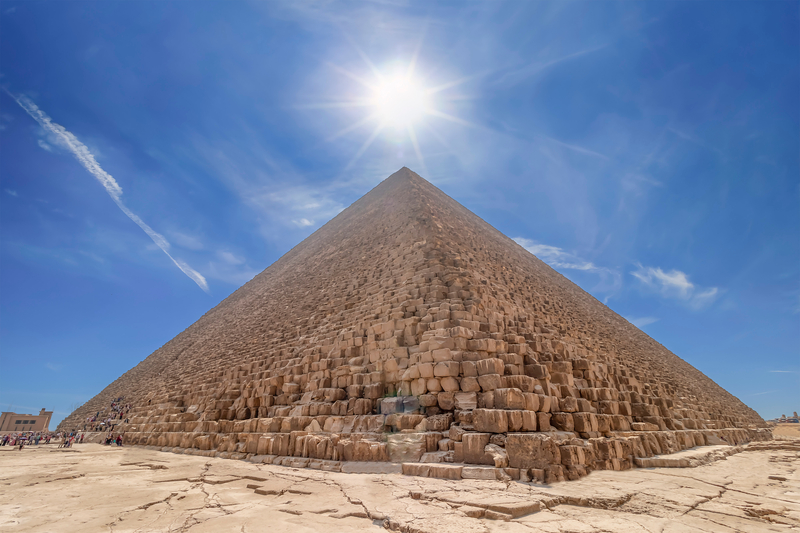
Now for the boring answers; the shape allows them to withstand earthquakes and distributes the weight as efficiently as possible. Yeah, YAWN. Turns out all those years of skilled craftsmanship and back-breaking labor were probably just for "efficiency."
Construction Time
How long did it take on average to build one of these bad boys? Researchers' best guesses are between 15-30 years per pyramid. Sources say that hundreds of construction workers labored in three-month shifts (and then presumably took early retirement) over the span of a decade or two.
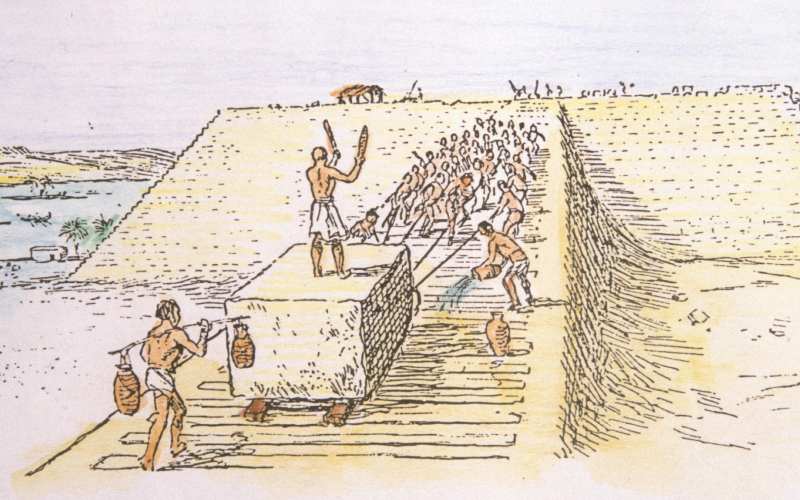
Without getting into alien conspiracies, the jury is still out on how they logistically managed these creations. Probably ropes and pulley systems, much to the chagrin of flat-earthers. Also, the pyramid itself wasn't the end of the building projects. Pyramids were often connected to surrounding tombs or valleys which would have added a good few extra years to the mix.